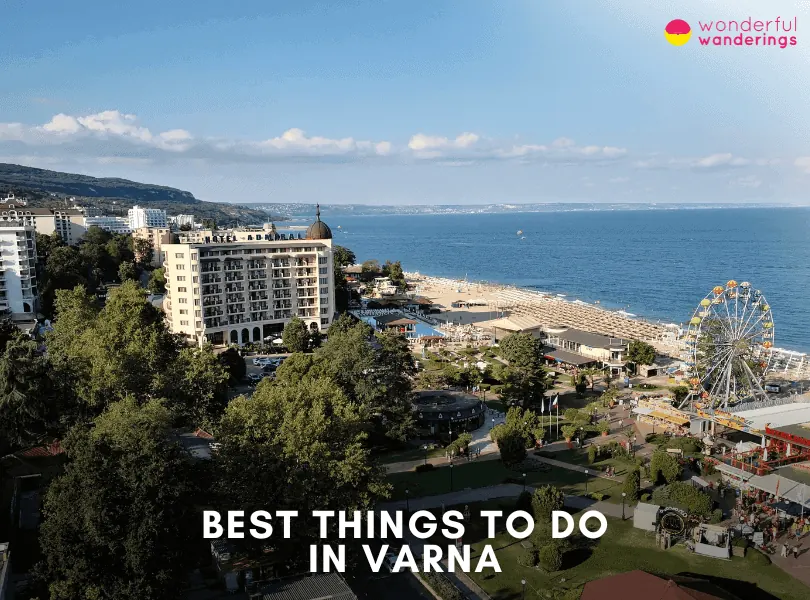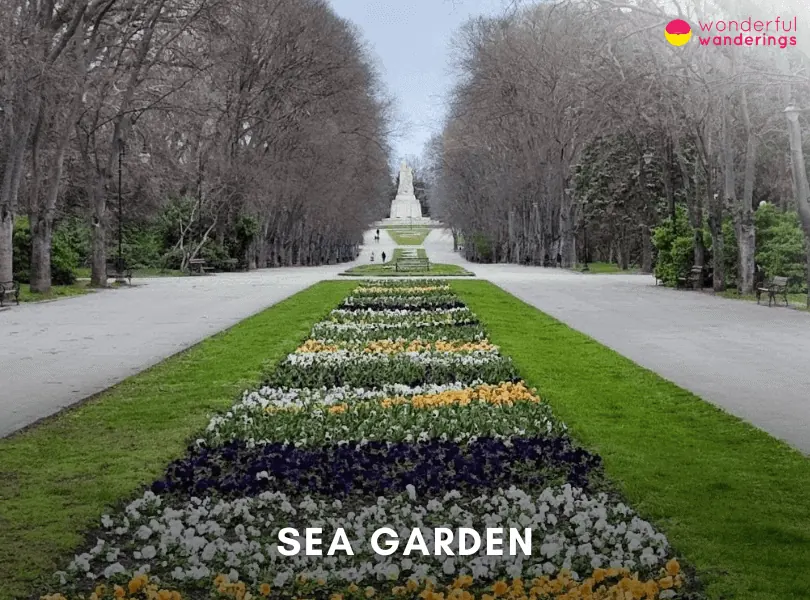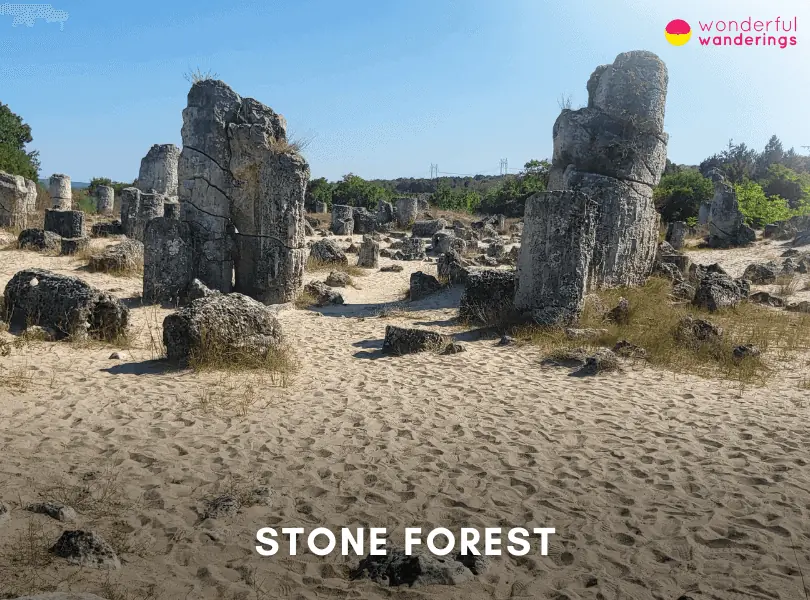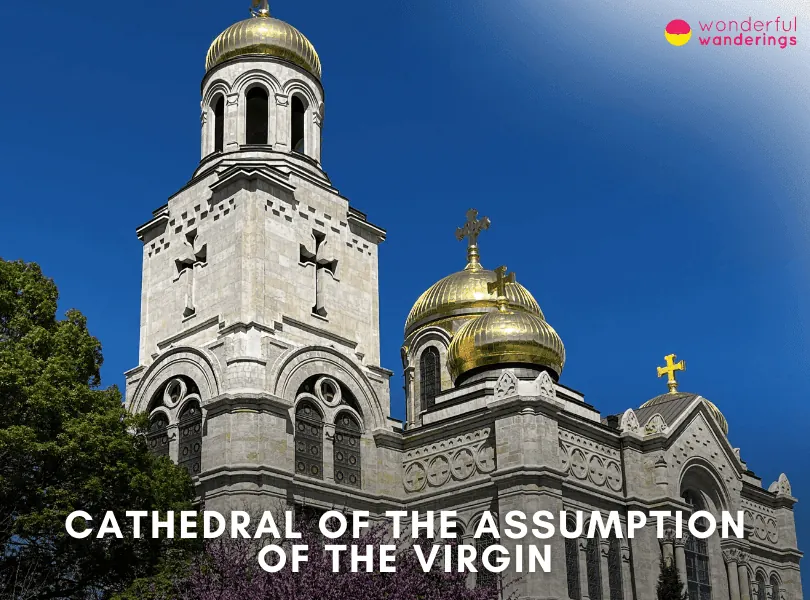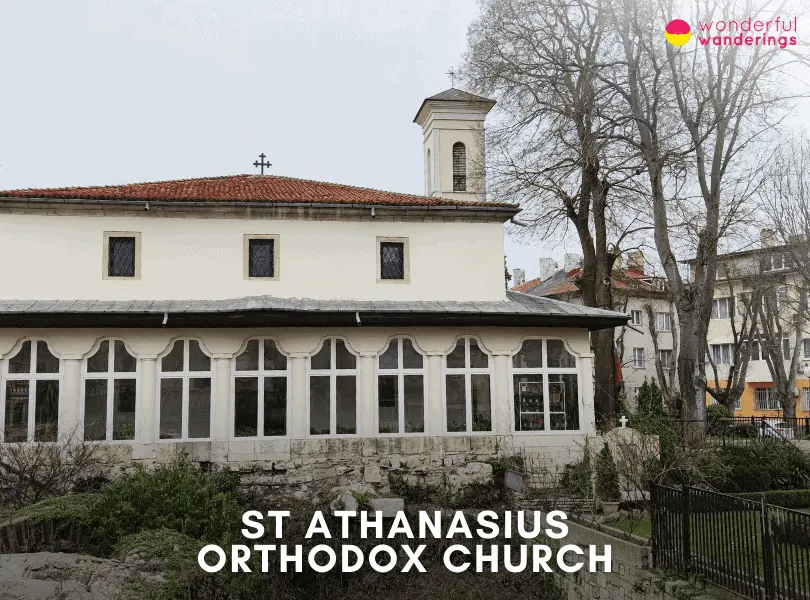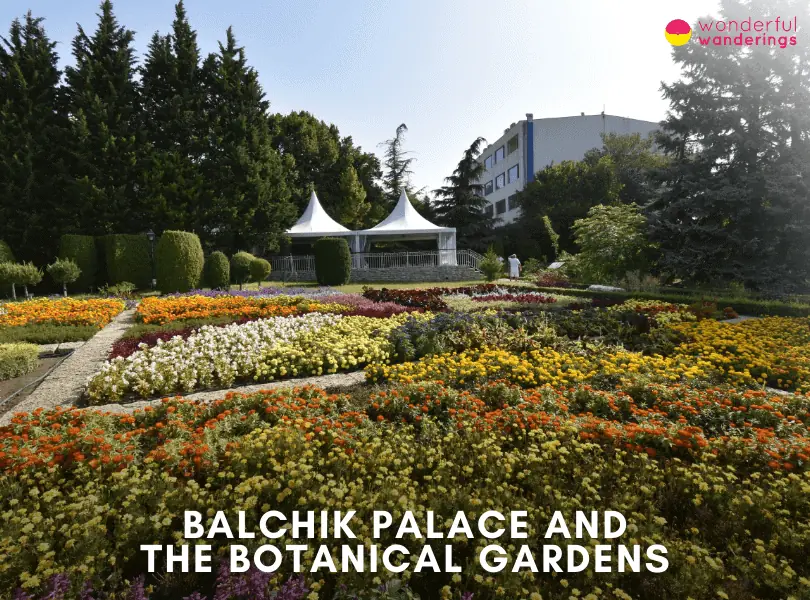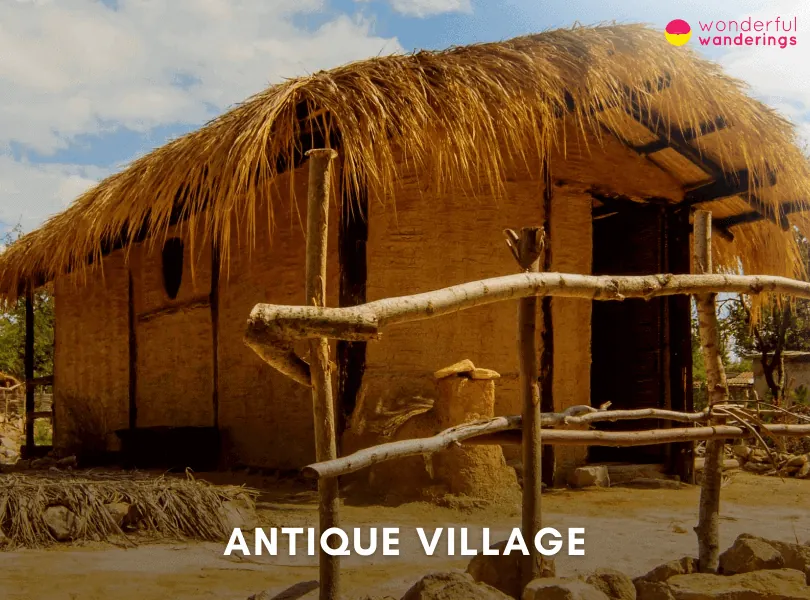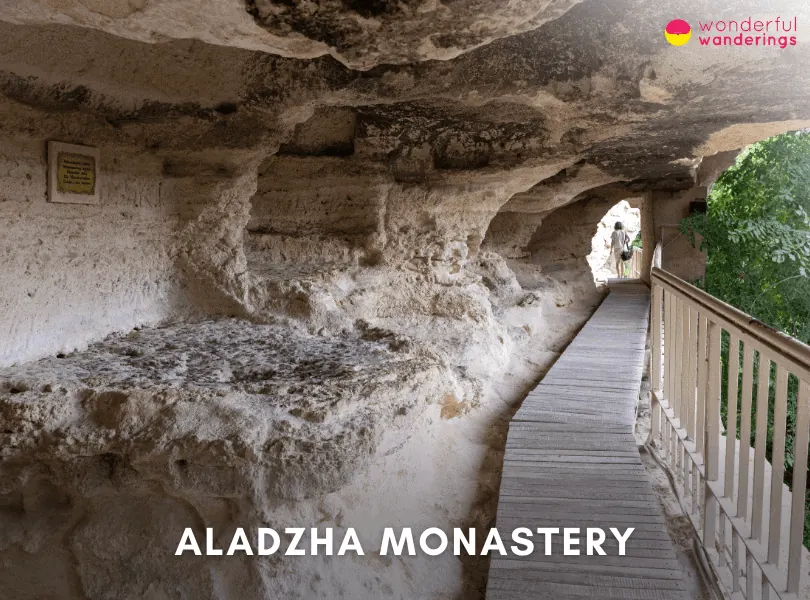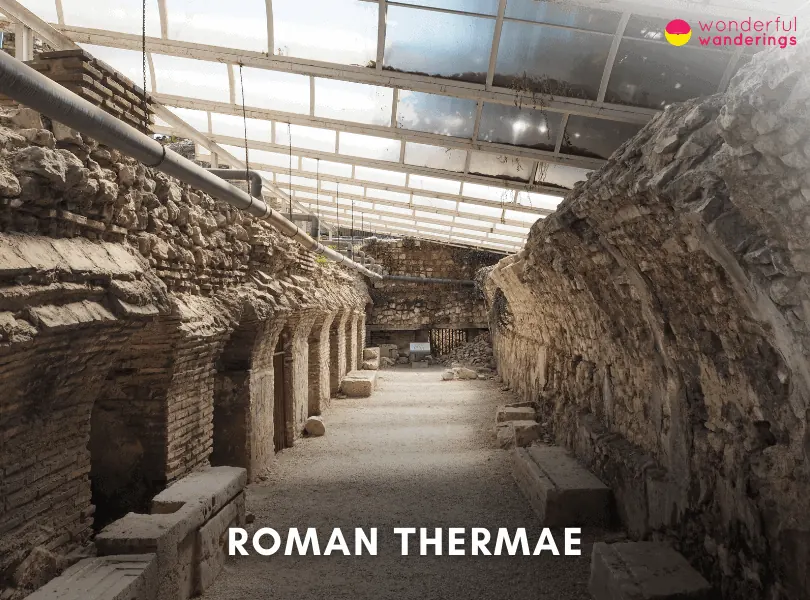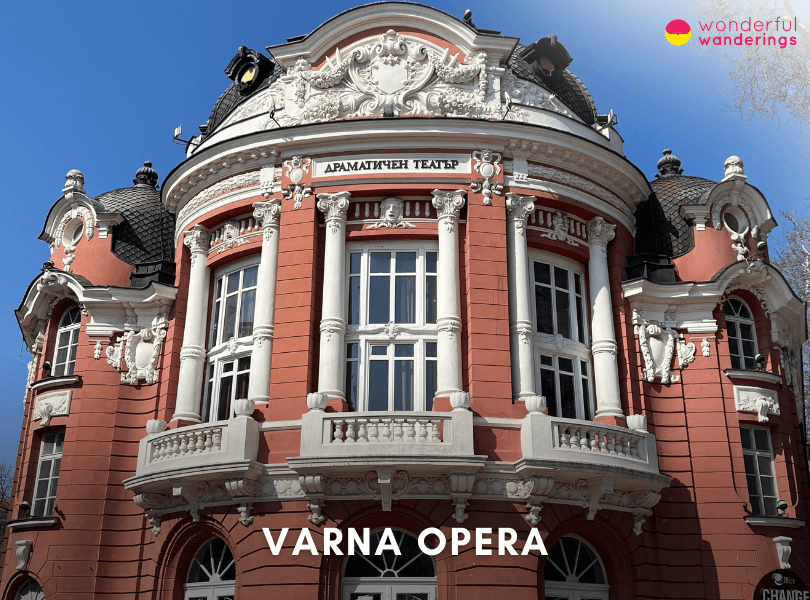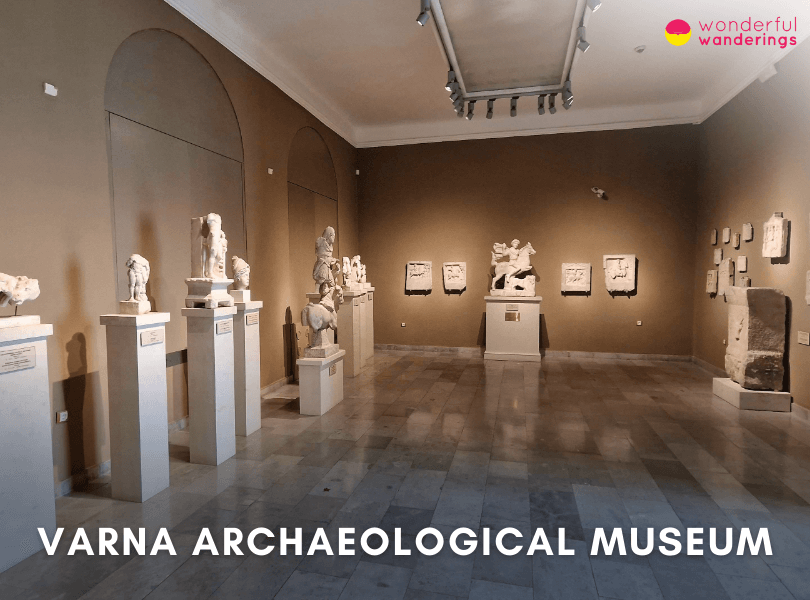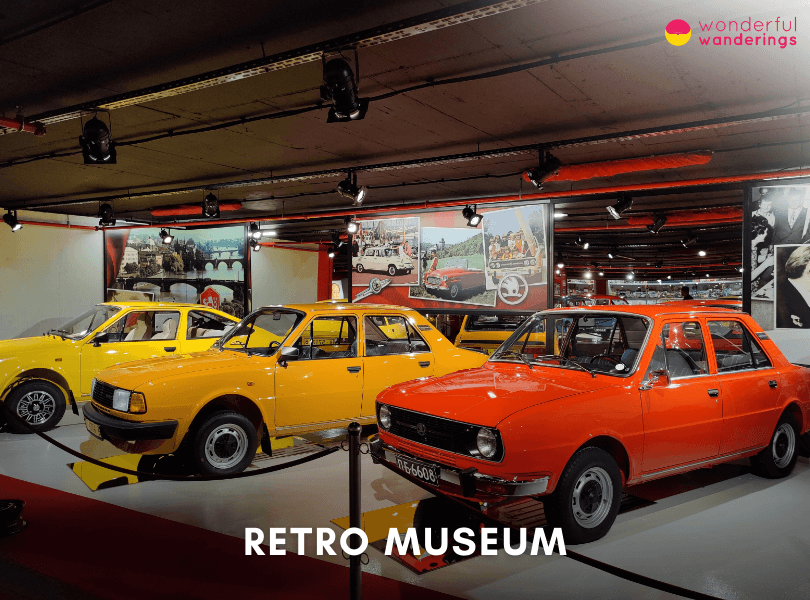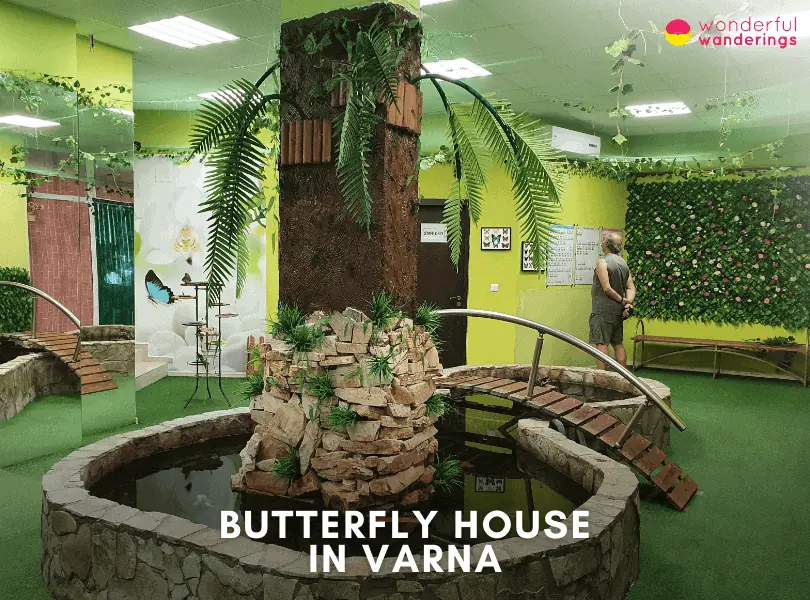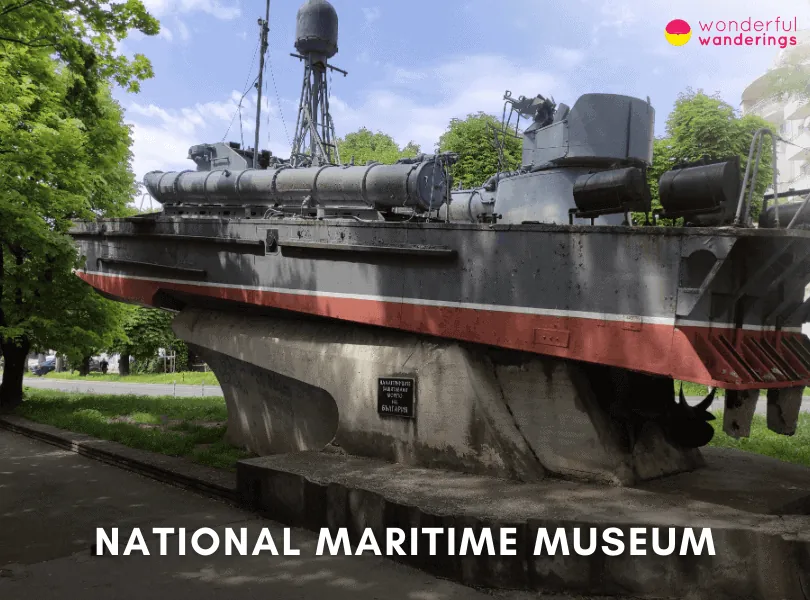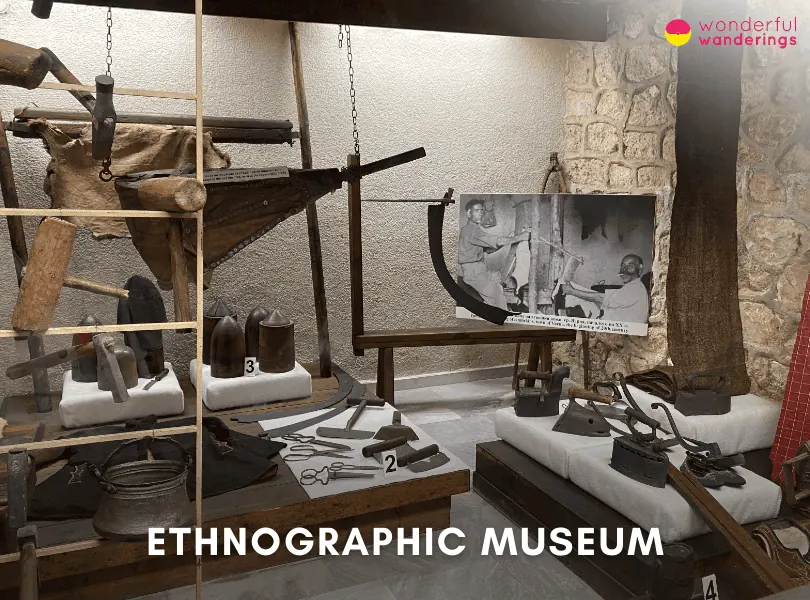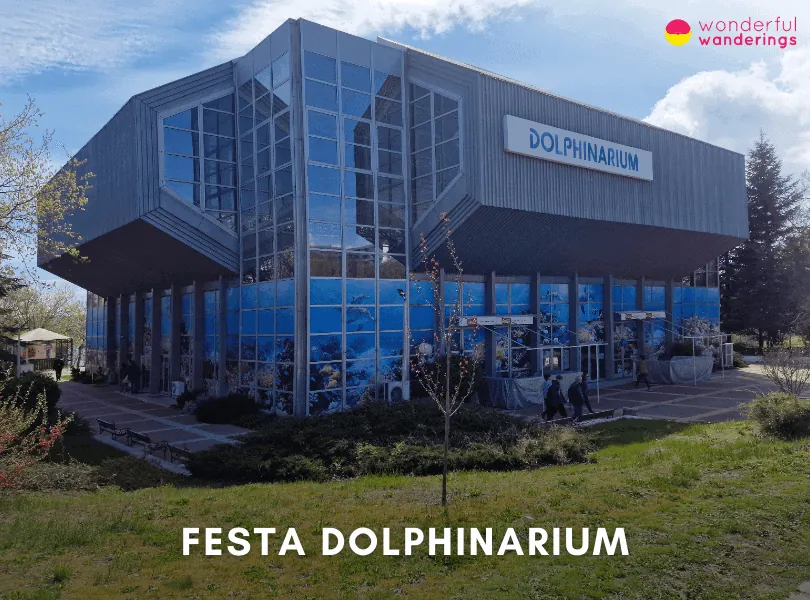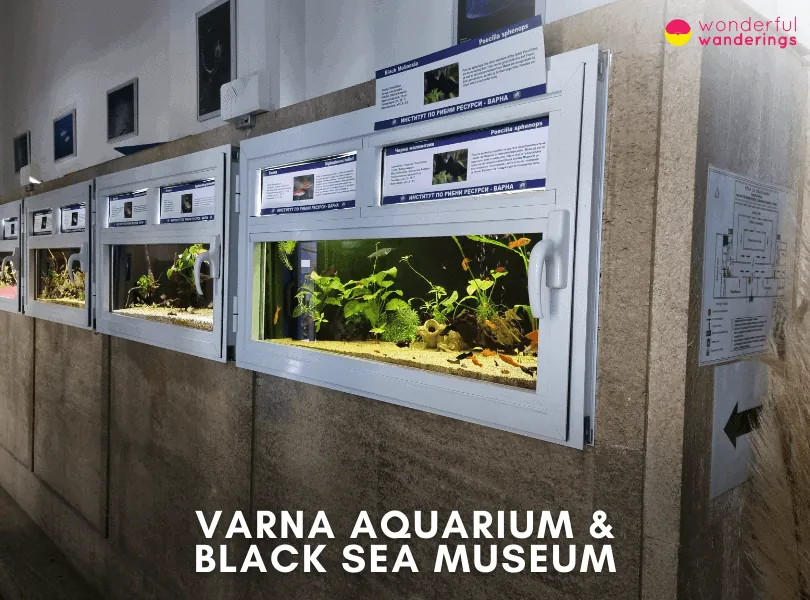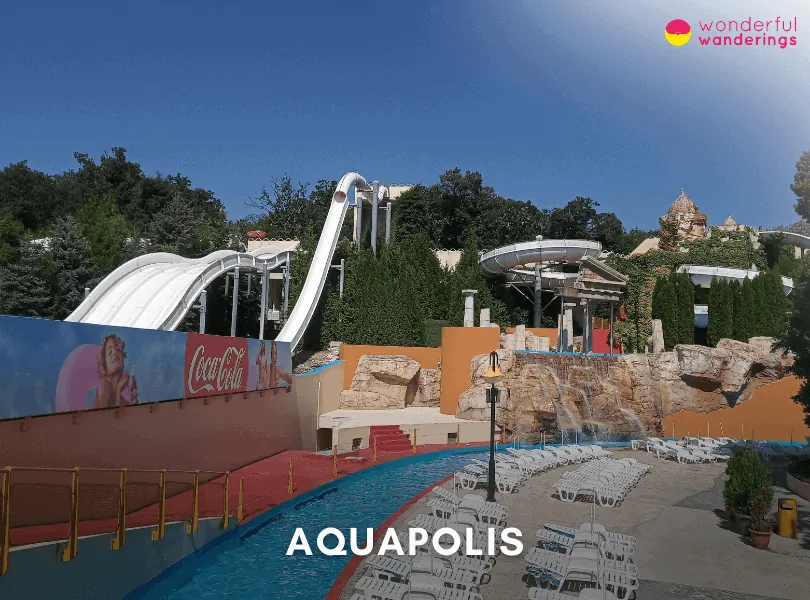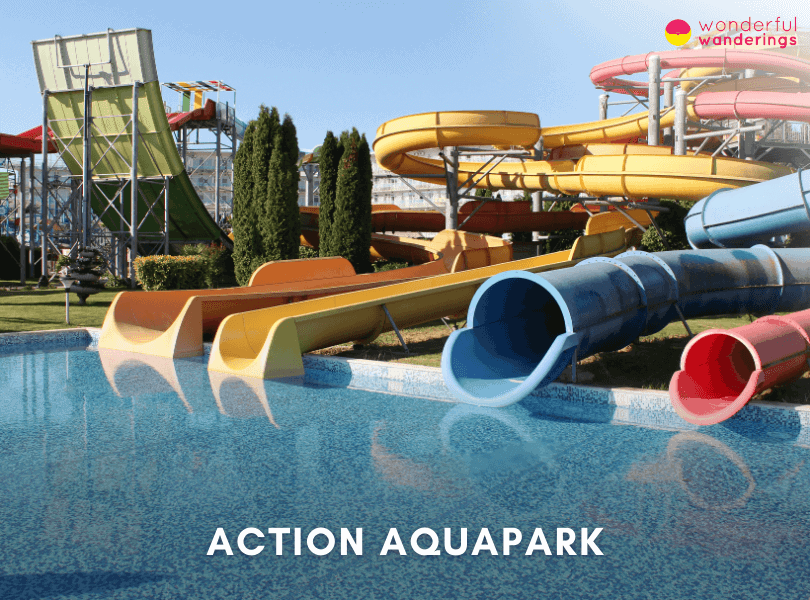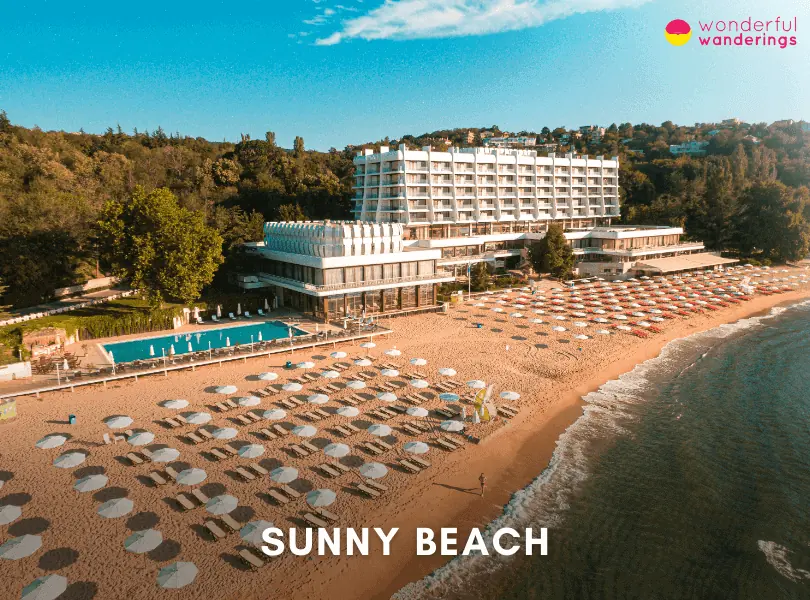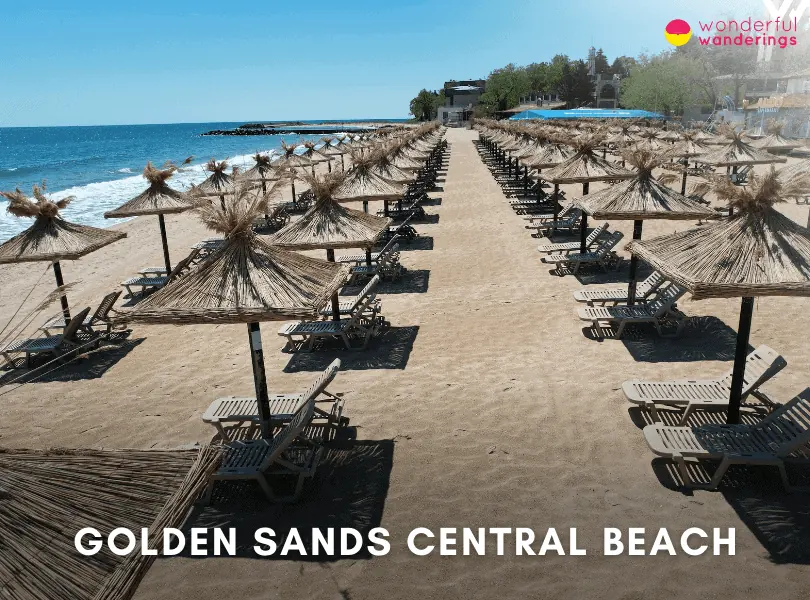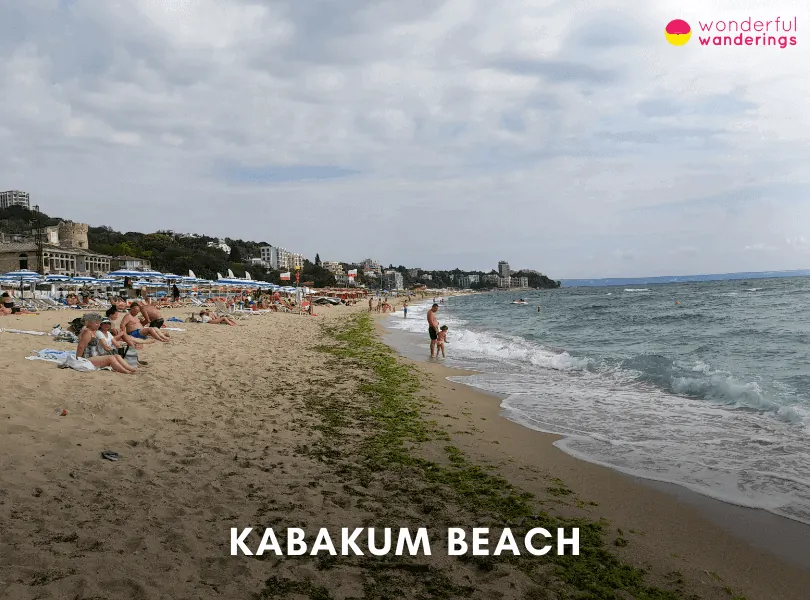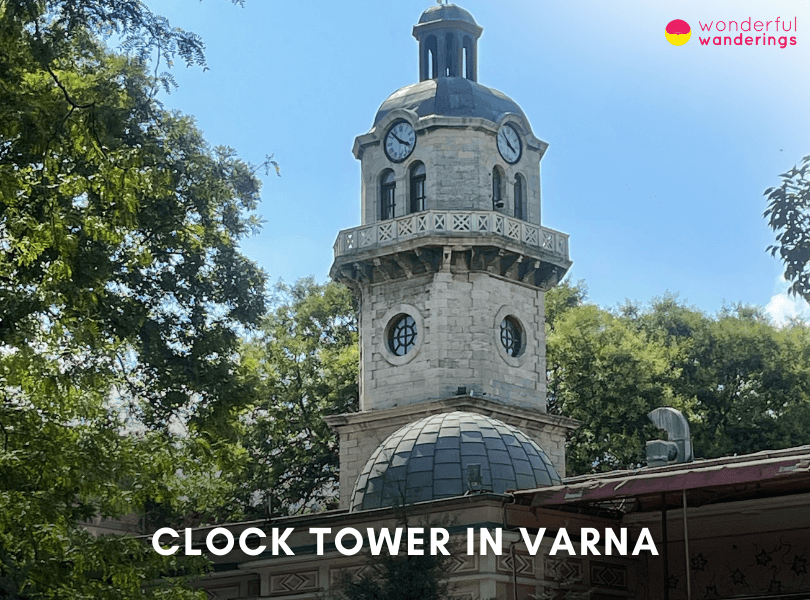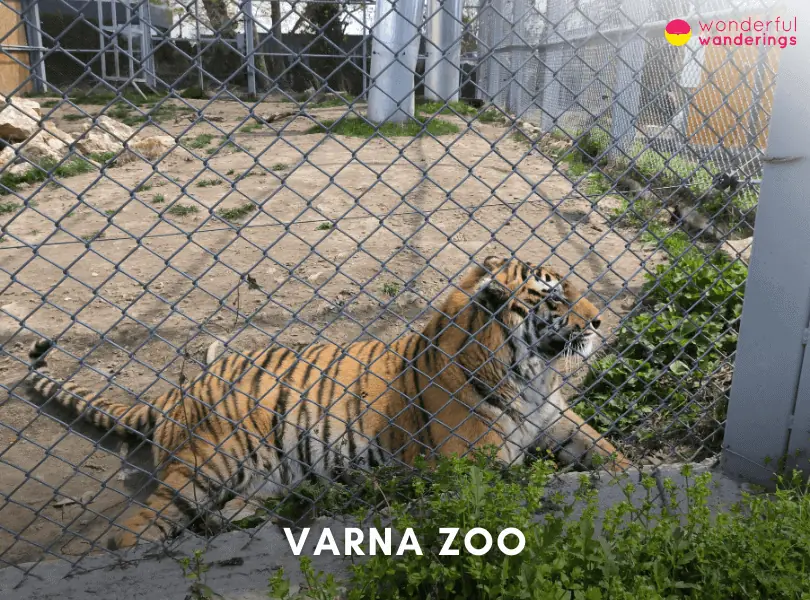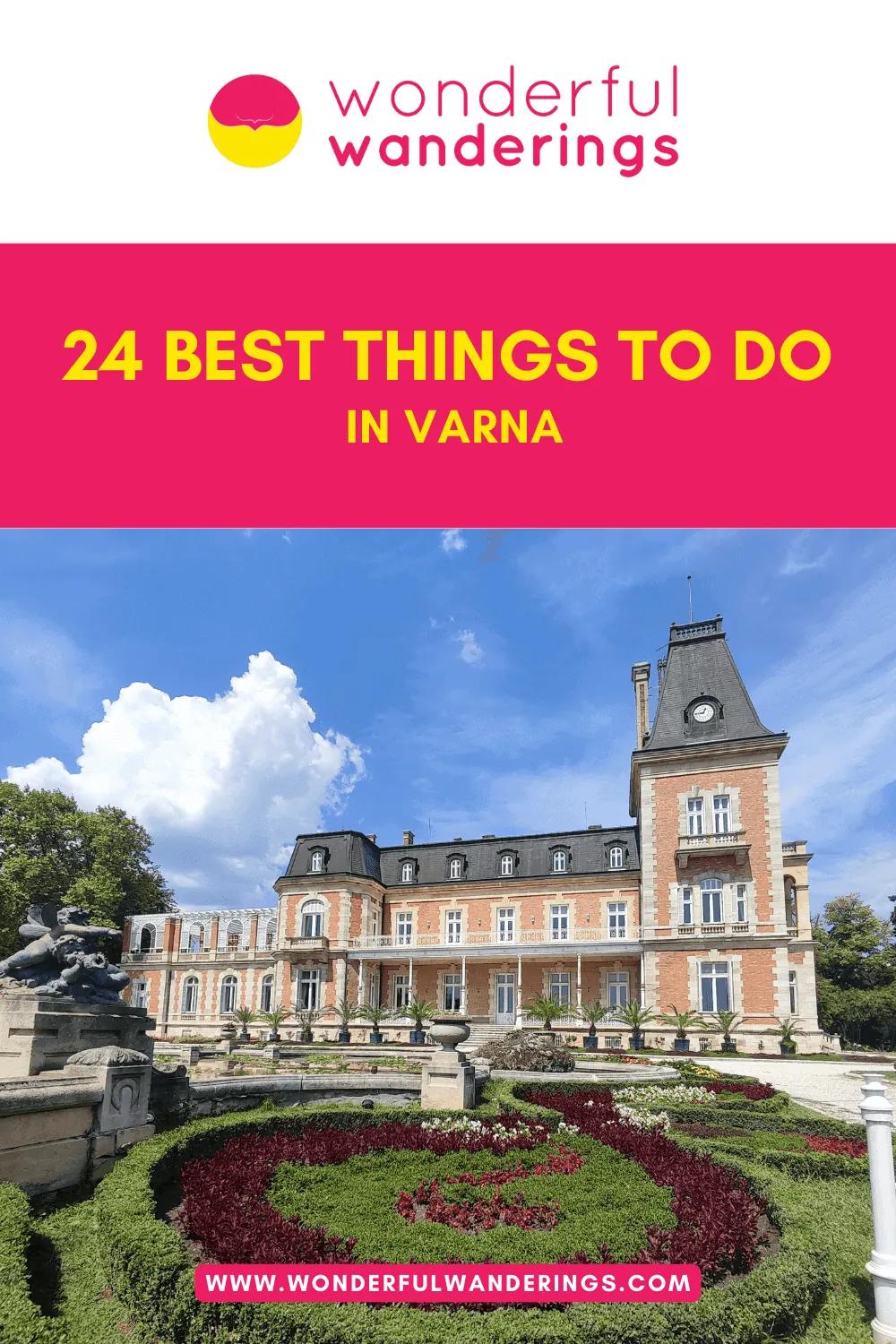Varna is the third largest city in Bulgaria and the largest city and seaside resort on the Bulgarian Black Sea Coast, located in the Northern Bulgaria region. It is not the capital of Bulgaria. Varna is commonly known as the maritime capital of Bulgaria, serving as the headquarters of the Bulgarian Navy and merchant marine. The population of Varna is 334,662 as of the latest. The city has seen growth from its population of 89,748 in 1950, although the growth rate has been relatively slow in recent years.
The rich history of Varna dates back to prehistoric times, believed to be the birthplace of the first European civilization, starting in the 5th millennium BC. Thracians, Greeks, Romans and the early Byzantine Empire inhabited the region before the birth of the First Bulgarian Kingdom. In 1444, the Battle of Varna took place, which was the last attempt of Christian Europe to push the Ottomans out of the Balkans. A railway between Ruse and Varna was built in 1866, making Varna a major shipbuilding center and port. The Russian Troops liberated Varna on July 27, 1878, after the Russo-Turkish War of 1877-1878, a conflict that led to the re-establishment of the Bulgarian state. The liberation of Varna marked a significant moment in the city’s history, as it was the last city to be liberated during this war. The Russian army, led by General Stolipin, faced great difficulty achieving this liberation. The liberation of Varna and other Bulgarian cities from Ottoman rule was a crucial step towards the establishment of the modern Bulgarian state.
Varna is a significant center for business, transportation, education, tourism, entertainment and healthcare. The city was designated as the seat of the Black Sea Euroregion by the Council of Europe in 2008 and was awarded the title of European Youth Capital in 2017. Varna is a major port, agricultural, trade and shipbuilding center and it has established itself as the nation’s principal port of export, a major grain-producing and viticulture center and the seat of the nation’s oldest institution of higher learning outside Sofia, the capital city of Bulgaria. The urban area of Varna has more than 20 kilometers (12.4 miles) of sand beaches and is rich in thermal mineral water sources. Varna is in the Eastern European Time (EET) zone, UTC/GMT +2 hours. Daylight Saving Time (DST) starts in late March, when the clocks move forward by one hour and ends in late October when the clocks move back by one hour.
Listed below are the best things to do in Varna.
- Sea Garden. Sea Garden, known as Primorski Park, is Varna’s largest public park and a national monument of landscape architecture. Designed by Czech gardener Anton Nowak, the park offers a variety of attractions and activities. It houses a zoo, the Natural Science Museum, the Naval Museum, the Copernicus Astronomy Complex Planetarium and a dolphinarium. Visitors can swim, play tennis, watch performances at the open-air theater, dine at sea-facing cafes and restaurants or simply stroll through the park. It caters to families, science and history enthusiasts and those seeking relaxation.
- Stone Forest. The Stone Forest or Pobiti Kamani, is a unique geological formation located 18 kilometers (11.2 miles) west of Varna. This desert-like landscape is home to hollow columnar rock formations that resemble an ancient forest made of stone. The formations vary in size, with some reaching up to 9 meters (9.84 yards) in height. The Stone Forest spans an area of 13 square kilometers (5.02 square miles) and is divided into several groups located north and south of Beloslav Lake. Theories suggest these formations could be due to coral activity or weathering of rocks. The Stone Forest is Europe’s only desert, hosting desert reptiles and animals. It is open for exploration, allowing visitors to observe its unique geological wonders.
- Cathedral of the Assumption of the Virgin. The Dormition of the Mother of God Cathedral, the largest church in Varna and the third largest in Bulgaria, is a significant symbol of Varna. Located at 1 St. Cyril and St. Methodius Square, it was officially opened on August 30, 1886. The cathedral serves as the residence of the bishopric of Varna and Preslav. Its architecture is modern Byzantine, featuring a wood-carved iconostasis from the Debur school. The cathedral, a national monument of culture, was built to commemorate Bulgaria’s liberation from the Ottoman Empire. Visitors appreciate its architecture, iconostasis and stained-glass windows and can attend services and learn about its history and cultural significance.
- St Athanasius Orthodox Church. St Athanasius Orthodox Church in Varna, is a significant Bulgarian Orthodox Church site built in 1838. The church, at Graf Ignatiev St 19, Varna 9000, stands on the ruins of a smaller church near Roman Thermal Baths. Known for preserved icons, it offers worship, spiritual retreats and community service. Metropolitan Kirill leads the Diocese of Varna and Veliki, with Fr. Anton Petrov Parushev as priest. Visitors can experience history, architecture, religious practices and community involvement.
- The Balchik Palace. The Balchik Palace, also known as the Quiet Nest Palace, is a historical structure in Balchik, Bulgaria. Constructed between 1926 and 1937, it served as a residence for Queen Marie of Romania during the Romanian control of the region. The palace, exhibiting a mix of Balkan and Ottoman Turkish architectural styles, includes residential villas, a smoking hall, a wine cellar, a monastery, a holy spring and a chapel. The palace grounds host a state-run botanical garden, managed by Sofia University, which is one of the largest in Europe with 2000 plant species. The garden’s cactus collection is the second largest in Europe. The palace and garden offer a rich experience for visitors, appealing to history enthusiasts and nature lovers alike.
- Antique Village. The Antique Village in Neofit Rilski, Varna, is a historical outdoor museum that opened in 2014. It is part of the larger “Historical Park” complex, recreating Bulgarian history from 8000 BC to 1396. The village features a Neolithic house, ceramic workshop, Chalkolithic pile house and Thracian museum. The museum displays replicas of golden treasures, bronze weapons and models of a Thracian king’s ship and the Alexandrovska tomb. Visitors can engage in activities like drawing a bow, wearing Thracian armor and tasting food made from ancient wheat. The Antique Village is suitable for families, history enthusiasts and school groups.
- Aladzha Monastery. Aladzha Monastery, a medieval Orthodox Christian cave monastery complex, is located 17 kilometers (10.6 miles) north of Varna and 3 kilometers (1.9 miles) west of Golden Sands beach resort. The monastery, carved into a 25-meter (82.02-feet) high karst cliff, was an active monastic community from the 12th to the early 18th century. The name “Aladzha” is Turkish for colorful, referring to its once vibrant murals, now almost destroyed. Today, the monastery is a popular tourist destination, offering exploration of the caves and catacombs and learning about its history. Thematic light shows enhance the visitor experience during the summer.
1. Sea Garden
Sea Garden, known as Primorski Park, is the largest public park in Varna. The park is a significant tourist attraction and a national monument of landscape architecture. It is the oldest and most popular destination in the port city, situated on the coast of the Black Sea. Sea Garden is formally known as Seaside Park. The famous Czech gardener Anton Nowak designed the modern appearance of the park. It has lush green grass, a play area for children and various cafes and restaurants. The park is home to several attractions. Visitors to Sea Garden can enjoy a variety of activities. They can explore the zoo and visit the Natural Science Museum, the Naval Museum, the Copernicus Astronomy Complex Planetarium or the dolphinarium. Visitors can swim in the pool, play tennis or watch a performance at the open-air theater. Visitors can dine at one of the many cafes and restaurants overlooking the sea or walk through the park.
Visitors can use various modes of transportation to get to Sea Garden. The park is well-connected by road and rail. Visitors can take a taxi or a bus to reach the park. Sea Garden is a public park open to everyone free of charge. Certain attractions within the park, such as the zoo, the museums and the dolphinarium, have their admission fees. Sea Garden is a place for families with children and suitable for those interested in science and history, with its museums and planetarium. Its cafes and restaurants make it a perfect spot for adults looking for a relaxing experience.
2. Stone Forest
The Stone Forest, known as Pobiti Kamani translates to “planted stones”, is a unique natural phenomenon in Varna. It is located 18 kilometers (11.2 miles) west of Varna, near the old road to the town of Devnya. The exact address is Varna-Sophia Old Road, Varna. The Stone Forest is near the villages Slanchevo and Pripek. This desert-like landscape with naturally occurring hollow columnar rock formations appears like the remains of an ancient forest built entirely of stone. The upright stones vary in size, with some measuring as tall as 9 meters (9.84 yards). They range from hollow to solid cylinders, with diameters ranging from 0.3 to 3 meters (0.328 to 3.28 yards). The total area of the Stone Forest covers 13 square kilometers (5.02 square miles), with seven large and several separate groups located north and south of Beloslav Lake. The Stone Forest is special due to its unique geological formations. It is one of the few places to see such a large concentration of natural rock columns. These formations are still being studied by experts, with theories suggesting they could be due to coral activity or the weathering of rocks. The Stone Forest is the sole desert in Europe, home to desert reptilians and animals. Visitors to the Stone Forest can explore the landscape and observe the natural rock formations. The area is open for exploration and is not gated in, allowing visitors to experience the unique desert environment and its geological wonders.
The Stone Forest is accessible by car or by public transport. Visitors can take line 43 to the bus stop “Razklon Banovo” in Slanchevo village. The admission cost for adults is €2.56 ($2.89, £2.17), for students and retirees it is €1.53 ($1.73, £1.30) and children up to 6 years old can enter for free. The Stone Forest is for everyone. Its unique geological formations make it a destination for those interested in natural phenomena, geology and the environment.
3. Cathedral of the Assumption of the Virgin
The Cathedral of the Assumption of the Virgin, known as the Dormition of the Mother of God Cathedral, is the largest church building in Varna and the third largest cathedral in Bulgaria. The cathedral is in the heart of Varna, at 1 St. Cyril and St. Methodius Square, 9000. Officially opened on August 30, 1886, it serves as the residence of the bishopric of Varna and Preslav and is considered one of the symbols of Varna. The cathedral features modern Byzantine architecture and a wood-carved iconostasis created by masters from the school of Debur. It was built to commemorate Bulgaria’s liberation from the Ottoman Empire and is a national monument of culture. Visitors can admire the cathedral’s impressive architecture, intricate wood-carved iconostasis and colorful stained-glass windows. They can attend religious services and explore the history and cultural significance of the cathedral.
The Cathedral of the Assumption of the Virgin is located in the city center of Varna, making it easily accessible by foot, car or public transportation, such as buses and taxis. There is no admission cost for entering the Cathedral of the Assumption of the Virgin. The Cathedral of the Assumption of the Virgin is suitable for people of all ages, including families with children, couples and solo travelers. It is an ideal destination for those interested in history, architecture and religious and cultural heritage.
4. St Athanasius Orthodox Church
St Athanasius Orthodox Church, located in Varna, is a significant religious site within the Bulgarian Orthodox Church. It is located at Graf Ignatiev St 19, Varna 9000, Bulgaria. The church was built in 1838 on the ruins of a smaller church next to the Roman Thermal Baths. It is a place of worship and spiritual retreat, known for its preserved icons. The church is actively involved in community service and supports needy families in the area. The church is part of the Diocese of Varna and Veliki, with Metropolitan Kirill as the head priest and Fr. Anton Petrov Parushev as the priest. Visitors to St Athanasius Orthodox Church can appreciate the historical significance of the church, admire the beautifully preserved icons and participate in religious services. The church provides a quiet retreat for prayer and reflection.
The specific mode of transportation to St Athanasius Orthodox Church would depend on the visitor’s starting location. The church is located in the city of Varna accessible by car, public transportation or on foot for those staying within the city. The church does not have a general admission fee. Activities at St Athanasius Orthodox Church are best suited for individuals interested in history, architecture and religious practices. The church’s community service activities appeal to those interested in social work and community involvement.
5. Balchik Palace and the botanical gardens
Balchik Palace is a historical edifice in the Bulgarian Black Sea town and resort of Balchik in Southern Dobruja. Balchik Palace is known as the Quiet Nest Palace. It is referred to as Дворец в Балчик (Dvorets v Balchik) in Bulgarian and it is known as Castelul din Balcic in Romanian. The palace was constructed between 1926 and 1937 during the Romanian control of the region, built to cater to the needs of Queen Marie of Romania. Balchik Palace and the botanical gardens are at “Kurortna zona Dvoretsa” No. 1, Town, District, 9600 Dvoretsa, Balchik, Bulgaria. It showcases a blend of Balkan and Ottoman Turkish architectural motifs. The palace grounds are home to a state-run botanical garden. The botanical garden, managed by Sofia University, is one of the largest in Europe. It houses 2000 plant species, including a significant collection of cacti. Its cactus collection is the second of its kind in Europe, following the one in Monaco. The garden is known for its large-sized cactus species. Visitors to Balchik Palace can explore the historical buildings, including residential villas, a smoking hall, a wine cellar, a monastery, a holy spring and a chapel. They can stroll through the botanical garden. Visitors can enjoy the beautiful views of the Black Sea from the palace grounds.
Visitors can use intercity bus lines from Varna bus station to reach Balchik Palace and the botanical gardens. Rental cars are a viable option to access the location. The admission cost for the palace is €7.67 ($8.66, £6.49) for adults and €1.53 ($1.73, £1.30) for children aged 7-18 years. Children up to 7 years old can enter for free. The admission cost for the Botanical garden is €0.51 ($0.58, £0.43) for adults. The activities at Balchik Palace and the botanical gardens are best for families with children, history enthusiasts and nature lovers. The historical and architectural significance of the palace appeals to history buffs, while the botanical garden is a treat for nature enthusiasts and botanists.
6. Antique Village
The Antique Village, known as the “Ancient Village”, is a historical outdoor museum in Neofit Rilski, Varna 9223, Bulgaria. Opened in 2014, it is part of the larger “Historical Park” complex, which aims to recreate pieces of Bulgarian history from 8000 BC to the fall of Bulgaria under Ottoman rule in 1396. The Antique Village offers a glimpse into the past with its Neolithic house, ancient ceramic workshop, Chalkolithic pile house and Thracian museum. The museum showcases replicas of golden treasures found in Bulgarian lands, battle bronze weapons and models of a ship of the Thracian king Rhesus and the Alexandrovska tomb with replicas of its frescoes.
The Antique Village is special because it provides a unique opportunity for visitors to experience Bulgarian history firsthand. It recreates different periods of Bulgarian history, from the Neolithic to the Ottoman era. Visitors to the Antique Village can explore various historical structures, including a Neolithic house, an ancient ceramic workshop and a Chalkolithic pile house. Visitors can visit the Thracian museum. Visitors can draw a bow, wear Thracian armor and weapons and try food made from spelled, an ancient wheat that was the main food of the Thracians.
The specific mode of transportation to the Antique Village would depend on the visitor’s starting location. Varna has a well-connected transportation network. Visitors can likely reach the Antique Village by car, taxi or public transportation. The nearest airport would be Varna Airport for international visitors. The entrance fee for adults to the Antique Village is €2.56 ($2.85, £2.13). The ticket price includes a guide in the Bulgarian language. Admission is free for children under 18 years old. The Antique Village is best for families, history enthusiasts and school groups. Its educational exhibits make it an excellent destination for those interested in learning about Bulgarian history and culture. The interactive activities are particularly engaging for children.
7. Aladzha Monastery
Aladzha Monastery is a medieval Orthodox Christian cave monastery complex in northeastern Bulgaria. The term “Aladzha” comes from the Turkish word for colorful, which most likely refers to the bright colors of its wall paintings. Aladzha Monastery is 17 kilometers (10.6 miles) north of central Varna and 3 kilometers (1.9 miles) west of the Golden Sands beach resort, in a protected forest area adjacent to the Golden Sands Nature Park. The specific address is Абай 61, 9000 Varna. This monastery complex was chiseled into a 25-meter (27.3 yards) high vertical karst cliff near the upper edge of the Franga Plateau. The complex includes two small nearby catacombs. It was an active hesychast monastic community of the Second Bulgarian Empire from the 12th century and perhaps survived until the early 18th century. The monastery’s present name, Aladzha, appeared in the late Ottoman period and referred to its colorful murals, now almost destroyed. Aladzha Monastery is a unique example of a medieval Orthodox Christian cave monastery complex. The monastery is notable for its longevity, having been an active monastic community from the 12th to possibly the early 18th century. The grotto is a popular tourist destination nowadays. Visitors to Aladzha Monastery can explore the caves and two small nearby catacombs. They can learn about the history of the monastery, its monastic community and its colorful murals. The staged thematic light shows add to the visitor experience during the summer.
Aladzha Monastery is easily accessible from the city of Varna. It is 17 kilometers (10.6 miles) north of central Varna, a distance covered by car in a short drive. Public transportation options are available. Visitors should check the most recent information from the monastery’s official website for admission fees and other information before planning their visit. Aladzha Monastery is a destination for history enthusiasts and those interested in religious architecture. The natural surroundings of the monastery make it a good choice for nature lovers. The thematic light shows, in the summer, appeal to all visitors, including families with children.
8. Roman Thermae
The Roman Thermae in Varna, is a complex of Ancient Roman baths. It is known as the Roman Baths of Varna or the Public Baths of Odessos. The Roman Thermae is in the central part of the Varna, on the corner of the streets San Stefano and Khan Krum. It was constructed in the late 2nd century AD. These baths are the fourth largest preserved Roman thermae in Europe and the largest in the Balkans. The complex includes a range of facilities such as an apodyterium (changing room), a frigidarium (cold pool), a tepidarium (warm pool) and a caldarium (hot pool), as well as a palaestra, a space with social and athletic functions. The heating was provided by a hypocaust, a well-preserved heating system connected to the double floor and special cavities, which were taking the hot air as far as the roof structure of the bath. This advanced floor- and water-heating system is a testament to the engineering prowess of the ancient Romans. Visitors to the Roman Thermae in Varna can explore the various chambers of the bath complex and admire the surviving pieces of the advanced floor- and water-heating systems. Visitors can learn about the history and architecture of the baths through guidebooks and souvenirs offered at the site.
Visitors can use public transport, such as city buses and trolleys, which have extensive networks throughout the city to reach the Roman Thermae in Varna. Car parks are available in Varna’s districts for those who prefer to drive. Varna Airport offers flights to and from various locations for international visitors. The entrance fee for the Roman Thermae in Varna is €2.56 ($2.85, £2.13). The Roman Thermae in Varna is suitable for history enthusiasts, architecture lovers and those interested in ancient civilizations would enjoy visiting this site. A visit to the Roman Thermae is an educational experience for children, making it a good option for families.
9. Varna Opera
Varna Opera, commonly referred to as the State Opera in Varna or Varna State Opera, is a significant cultural institution in Varna and serves as a beacon of the performing arts. Its location is at Nezavisimost Square, 9000 Varna Center, Varna. It is a state-supported cultural institution established in the late 19th century. Its interior is adorned with intricate designs and the auditorium can accommodate a large audience, providing an immersive experience for all attendees. Varna Opera stands out for its rich history, architectural grandeur and the quality of performances it hosts. It is one of the oldest cultural institutions in Varna and its architecture is a testament to the city’s historical and cultural heritage. Visitors can appreciate the architectural beauty of the building and learn about its history. The opera house is known for hosting performances, including opera, ballet and concerts, featuring both local and international artists. Its commitment to promoting the arts and providing a platform for performers makes it a special place in Varna. Visitors to Varna Opera can enjoy a variety of performances. The opera house hosts shows throughout the year for visitors to experience different genres of performing arts.
Reaching Varna Opera is straightforward as it is in the city center of Varna. Visitors can use public transportation, including buses and taxis, to reach the opera house. Parking facilities are available nearby for those driving. The Varna Airport is 10 kilometers (6.2 miles) away, making the opera house accessible for international visitors. The admission cost for Varna Opera varies depending on the performance and the seating category. On average, ticket prices range from €10 to €30 ($11 to $33, £8 to £25). It is recommended to check the official website or contact the box office for the most accurate and up-to-date information. The activities at Varna Opera cater to everyone, from classical opera and ballet for adults and teenagers to special performances designed for children. The opera house is the place for those interested in the performing arts, regardless of age.
10. Varna Archaeological Museum
The Varna Archaeological Museum is known in Bulgarian as “Varnenski arheologicheski muzey”. It is a significant archaeological museum at 41 Maria Luisa Blvd, 9000 Varna, in the city of Varna, on the Black Sea coast of Bulgaria. It was established on June 3, 1888 and housed in a historic Neo-Renaissance building designed by architect Petko Momchilov, built for the Varna Girls’ School. The museum is one of the largest in Bulgaria, with an exhibition area of 2,150 square meters (2571.4 square yards). It showcases exhibits from various historical periods, including the prehistoric, Thracian, Ancient Greek and Roman periods, as well as from the times of the medieval Bulgarian and Byzantine Empires, Ottoman rule and the Bulgarian National Revival. The museum’s most celebrated exhibit is the Gold of Varna, the oldest gold treasure in the world, dating back to 4600-4200 BCE. The Varna Archaeological Museum is distinguished for housing the Gold of Varna, the oldest gold treasure in the world, dating back to 4600-4200 BCE. This treasure, excavated in 1972, occupies three separate exhibition halls in the museum. The museum manages two open-air archaeological sites. the large Roman baths in the city center and the medieval grotto of Aladzha Monastery at Golden Sands Nature Park. Visitors to the Varna Archaeological Museum can explore a vast collection of over 100,000 items from various historical periods. The exhibits are arranged chronologically, allowing visitors to follow thousands of years of human, technological and social development in the Varna region. Special attention is paid to the history of the city of Odessos/Varna, from its founding in the Early Antiquity until the Late Middle Ages. Visitors can use touchscreen information kiosks to learn more about the exhibits and the layout of the museum. Photography is allowed in the exhibition halls after paying a fee.
Visitors can use several bus lines to reach the Varna Archaeological Museum. The museum is next to the tall building of Varna’s City Hall. The entrance fee for adults to the Varna Archaeological Museum is €5.11 ($5.78, £4.34), while for students it is €1.53 ($1.73, £1.30). Children under the age of 6 can enter for free. The Varna Archaeological Museum is best for history enthusiasts, students, researchers and families. The museum features a children’s study museum, providing an educational, hands-on experience of the history of the Varna region.
11. Retro Museum
The Retro Museum in Varna, is a unique museum that showcases artifacts and exhibits from the period between 1944 and 1989. It offers a unique glimpse into the life and culture of Bulgarians during the socialist era. The museum is within the Grand Mall at ul. “Akademik Andrei Saharov” 2, 9000 Varna. It covers an area of 4,000 square meters (4783.96 square yards). The collection includes over 50 impeccably restored cars from the era, such as “Volga”, “Moskvich”, “Skoda”, and “Trabant”, as well as popular bikes like “Simson” and “Balkan”. The museum features wax figures of prominent personalities from the era, including Todor Zhivkov, Leonid Brezhnev and Fidel Castro, as well as known Bulgarian figures like Emil Dimitrov, Georgi Partsalev, George Kaloyanchev and Todor Kolev. Visitors to the Retro Museum can explore the vast collection of artifacts, including cars, motorcycles, household items and wax figures of famous personalities from the socialist era. They can learn about the history and culture of Bulgaria during this period and gain a deeper understanding of life under socialism.
Visitors can take public buses to the bus stop “Avtogara” to get to the Retro Museum. The admission cost for the Retro Museum is €7.67 ($8.67, £6.58) for adults, €5.11 ($5.78, £4.38) for children up to 18 years old and free entry for children up to 6 years old. The Retro Museum is suitable for history enthusiasts, car lovers and those interested in learning about life during the socialist era in Bulgaria. It is an educational and engaging experience for adults and children.
12. Butterfly House in Varna
The Butterfly House in Varna or Butterfly House Varna, is a unique attraction that offers visitors an immersive experience of the world of butterflies. It is located at “St. Constantine and Elena” 5, 45th Street, in Varna, in one of the most scenic places in Bulgaria, the resort of St. Constantine and Helena, a suburb of Varna. This location is famous for its beaches, thermal springs and hotels. The Butterfly House in Varna is 30 meters (32.8 yards) from Hotel Aurora and near a botanical garden. This facility is designed for the breeding and display of butterflies, with an emphasis on education. It creates an atmosphere reminiscent of a rainforest, with a lake, a waterfall and floating carp and turtles. The Butterfly House in Varna offers a unique experience that allows visitors to observe and learn about the life cycle of butterflies in a setting that mimics their natural habitat. Visitors can witness the extraordinary secret of nature as butterflies emerge from their cocoons. The Butterfly House in Varna hosts different types of caterpillars and pupae of various butterflies. An experienced guide provides information about the structure and other features of the life of butterflies. Visitors can participate in unique photo sessions and organize excursions.
Visitors can take bus routes to the Balkan (Marek) stop to reach the Butterfly House in Varna from the city. Visitors should get off at the stop Balkan 2 (Marek) if they are coming from the Golden Sands. The admission cost to the Butterfly House in Varna is €5.52 ($6.12, £4.56) for adults and €3.68 ($4.08, £3.04) for children. It is suitable for all ages and groups. It is a family-friendly attraction that offers an educational and enjoyable experience. It is an ideal place for groups, including school excursions.
13. National Maritime Museum
The National Maritime Museum in Varna, is a cultural institution dedicated to preserving and showcasing the rich maritime history of the region, located in Varna, a coastal city on the Black Sea. The museum’s address is Primorski Park, 9000 Varna, commonly called the “National Maritime Museum” or simply the “Maritime Museum. It was established in 1923. It features a vast collection of exhibits, including ship models, navigational instruments, marine paintings and artifacts from ancient shipwrecks. The museum focuses on the maritime history of Bulgaria and the Black Sea region from ancient times to the present day. Visitors can explore the development of shipbuilding, navigation and maritime trade, as well as learn about the naval battles and significant events that shaped the region’s history.
The museum is housed in a historic building within the scenic Primorski Park, adding to its charm and appeal. Visitors to the National Maritime Museum can explore exhibits showcasing the maritime history of Bulgaria and the Black Sea region. Visitors can view ship models, navigational instruments, marine paintings and artifacts from ancient shipwrecks. The museum offers educational programs and guided tours. It allows visitors to learn more about the region’s maritime heritage and the events that shaped its history.
Visitors can use public transportation, such as buses or taxis, to the National Maritime Museum in Varna. The museum is easily accessible from the city center and several bus lines stop. Visitors can walk or rent a bicycle to explore the scenic Primorski Park and reach the museum. The admission cost for entering the National Maritime Museum in Varna varies depending on the visitor’s age and status. The standard adult ticket price is €2.56 ($2.89, £2.20), while children, students and seniors can have discounted rates. The National Maritime Museum is suitable for a wide range of audiences, including families, history enthusiasts and tourists interested in learning about the maritime heritage of Bulgaria and the Black Sea region. The museum’s exhibits and educational programs cater to adults and children, making it an engaging and informative experience for all ages.
14. Ethnographic Museum
The Ethnographic Museum is commonly called the Ethnographic House due to its location in a historic residential building. The Ethnographic Museum in Varna is at 21 Slivnitsa Blvd, Varna 9000, Bulgaria, in the heart of the city. It is accessible to both locals and tourists. It is a cultural institution dedicated to the preservation of artifacts related to the region’s rich history and diverse ethnic traditions. The museum is housed in a 19th-century building and it showcases a variety of exhibits that span centuries, providing a glimpse into the lives of the people who have inhabited this region over time. The museum’s mission is to educate visitors about the cultural heritage of Varna and its surrounding areas, making it a valuable resource for those interested in learning more about Bulgaria’s history and traditions. Visitors to the Ethnographic Museum in Varna can explore exhibits that showcase the region’s cultural heritage. They can view traditional costumes, household items, musical instruments and crafts, all of which provide insight into the lives of the people who have lived in this region over the centuries. The museum hosts various cultural events and workshops and offers visitors to engage with the local culture first-hand.
Visitors can use various modes of transportation to reach the Ethnographic Museum in Varna. The city’s public transportation system includes buses and trolleys that provide routes that pass near the museum. Parking facilities are available in the vicinity of the museum for those who prefer to drive. The museum’s central location makes it accessible on foot for those staying in downtown Varna. The admission cost for the Ethnographic Museum in Varna is €1.53 ($1.72, £1.29) for adults and €0.51 ($0.57, £0.43) for students and seniors. The Ethnographic Museum is a destination for history enthusiasts, cultural explorers and families. The museum’s diverse collection provides educational opportunities for adults and children, a suitable destination for school trips. The cultural events and workshops hosted by the museum offer engaging experiences for those interested in hands-on learning about the region’s traditions.
15. Festa Dolphinarium
Festa Dolphinarium in Varna is located at Primorski Park, Varna 9000, Bulgaria. It is commonly referred to as Varna Dolphinarium or simply The Dolphinarium. It is a unique marine attraction showcasing the beauty and intelligence of dolphins. It is a place where visitors can witness the incredible abilities of these marine mammals through various shows and performances. The Dolphinarium is part of the Sea Garden, a large park in Varna and it is the sole facility of its kind in Bulgaria, a popular destination for locals and tourists. It houses a group of bottlenose dolphins trained to perform tricks and stunts. The Dolphinarium offers a unique opportunity to see these magnificent creatures up close and witness their impressive performances. The Dolphinarium is not just an entertainment venue. It is a place for education and research, contributing to the understanding and conservation of these fascinating creatures. Visitors to Festa Dolphinarium in Varna can enjoy a variety of activities. Visitors can learn about the life and behavior of dolphins through educational programs. The Dolphinarium allows visitors to meet and interact with the dolphins under the supervision of trained professionals.
Visitors can use various modes of transportation to reach Festa Dolphinarium in Varna. Public transportation, such as buses and taxis, are readily available if traveling from within the city. The nearest airport is Varna Airport for visitors traveling from other cities or countries; they can take a taxi or a bus to reach the Dolphinarium from the airport. The admission cost for entering Festa Dolphinarium in Varna varies. Standard adult tickets are priced at €10 ($11.36, £8.64), while tickets for children aged 3-12 years are €5 ($5.68, £4.32). Children under three years of age can enter for free. The activities at Festa Dolphinarium in Varna are suitable for all ages. The dolphin shows are popular among children, but they captivate adults with the beauty and intelligence of these marine creatures. The educational programs offered by the Dolphinarium are best for students and anyone interested in marine life.
16. Varna Aquarium & Black Sea Museum
Varna Aquarium & Black Sea Museum, known as Aquarium Varna, is a public aquarium at 4 Primorski Blvd, Varna. It focuses on showcasing the diverse flora and fauna of the Black Sea. It is the sole marine biological station in the country, making it a significant center for marine research and education. The aquarium houses over 140 species of fish, including freshwater fish, Mediterranean fish, exotic species from distant parts of the world ocean, molluscs, actinides, crabs, periwinkles and even sharks. It displays natural resources derived from the Black Sea, such as sea salt and petroleum. The aquarium displays mussels, algae and other marine organisms. The museum section of the facility provides insights into the oceanography of the Black Sea and its research history. The Varna Aquarium & Black Sea Museum is a significant attraction in the city, offering visitors a unique opportunity to explore and learn about the marine life of the Black Sea. Visitors to the Varna Aquarium & Black Sea Museum can explore the diverse marine life of the Black Sea. The museum section provides insights into the oceanography of the Black Sea and its research history. Visitors can learn about the various species, their habitats and the importance of conservation efforts.
Varna Aquarium & Black Sea Museum is easily accessible by various modes of transportation. Visitors can reach the aquarium by city transport, taxi or private vehicle. The aquarium is centrally located in Varna, making it easily accessible from various parts of the city. The admission cost for the Varna Aquarium & Black Sea Museum varies by age; for children aged 3-5, the cost is €0.51 ($0.58, £0.44); for aged 6-17, the cost is €1.02 ($1.16, £0.88); for adults, the cost is €2.04 ($2.32, £1.76). Prices are subject to change. It is advisable to check the official website or contact the aquarium for the most current information. The Varna Aquarium & Black Sea Museum is an educational and entertaining destination for families with children, school groups, tourists interested in marine life and anyone who wants to learn more about the Black Sea’s ecosystem and its diverse species.
17. Aquapolis
Aquapolis is a water park in Varna, located in the northwestern part of the Golden Sands resort and covers an area of 40,000 square meters (47,839.602 square yards). Aquapolis is the first water park in Bulgaria. It is considered one of the most beautiful water parks in Eastern Europe due to its unique Mediterranean architectural style and the combination of natural park elements with artificial water attractions. The park can accommodate up to 3,000 visitors simultaneously. The park features a unique Mediterranean architectural style, blending artificial elements like pools, water slides, Jacuzzis, fountains and waterfalls with the surrounding forest park that visitors can enjoy. Aquapolis has three sections. Adult, Children and Extreme Zone, catering to different age groups and thrill levels. The adult section features a Slow River and relaxation pool, while the children’s section has a playground with a pool, slides and water creatures. The Extreme Zone offers adrenaline-pumping slides for thrill-seekers.
Visitors can take a taxi or bus to the Golden Sands resort in Varna, to get to Aquapolis. The park is on the main road from Riviera to Albena resort, near the casino Havana and DoubleTree by Hilton Hotel Varna – Golden Sands. The admission cost for one visitor is €19 ($20.60, £19). It includes an all-day entry, sunbed, mat and parasol. Visitors should check the official website or contact the park for the most up-to-date information, as prices vary. Aquapolis caters to families, children and thrill-seekers.
18. Action Aquapark
Action Aquapark in Varna, known as Action Aquapark Sunny Beach, is a thematic water park in Sunny Beach, the largest seaside resort in Bulgaria. It is at Sunny Beach Resort, Main Road, Sunny Beach, Bulgaria. It was the first water park in the country and offers a wide range of water attractions for visitors of all ages. The park covers an area of 36,000 square meters (43,055.64 square yards). It features 30 water attractions, including adrenaline-pumping slides like the Extreme, which reaches speeds of up to 70 km/h (43.50 mi/h) and the Freefall, as well as family-friendly attractions such as the Giant Slide, Crazy River and wave pool and dedicated areas for children, ensuring a fun and exciting experience for everyone. There are areas for children, like the Water Castle and Adventure Island and facilities for relaxation, including a Jacuzzi and an adult pool. Visitors to Action Aquapark can enjoy a range of water attractions, including thrilling slides like the Kamikaze and Turbolence.
Visitors can use the specialized shuttle transport service provided by the park to get to Action Aquapark, which offers pickup points from Elenite, Sunny Beach, Sveti Vlas, Nessebar and Ravda. This shuttle service is completely free. The admission cost for entering Action Aquapark varies depending on the ticket type. A full-day ticket costs €13.8 ($15.5, £11.84), while a half-day ticket for the same year costs €10.72 ($12, £9.20). Action Aquapark is suitable for visitors of all ages, including children, adults and families. The park offers a range of water attractions, from adrenaline-pumping slides to family-friendly attractions and dedicated areas for children.
19. Sunny Beach
Sunny Beach, a major seaside resort on the Black Sea coast of Bulgaria, is a popular destination for tourists, located 35 kilometers (22 miles) north of Burgas and 94 kilometers (58 miles) south of Varna. It is known by its Bulgarian name, Slanchev Bryag, commonly used within the country and by locals. It is known for its long, crescent-shaped sandy beach stretching 8 kilometers. The resort has hotels, bars, restaurants and entertainment facilities, making it a lively place during the summer season. The beach is recognized for its water sports offerings, including jet skiing, parasailing and speed boat rides. The resort’s nightlife attracts a younger crowd, with many nightclubs and bars operating until the early hours. Visitors to Sunny Beach have a wide range of activities to choose from. The beach offers water sports such as jet skiing, parasailing and speed boat rides during the day. Numerous restaurants and bars along the beachfront are available for dining and relaxation.
Visitors can fly into Burgas Airport, which is 27 kilometers (17 miles) away, to reach Sunny Beach in Varna. Regular bus services, taxis and car rental options are available to access the resort from the airport. Bus services from major cities like Sofia and Plovdiv are available for those traveling within Bulgaria. There is no admission cost to enter Sunny Beach in Varna. The beach is open to the public. Water sports and admission to nightclubs have separate charges. Prices can vary depending on the activity and the provider. The beach and water sports activities in Sunny Beach are suitable for families with children, while the nightlife scene attracts a younger crowd.
20. Golden Sands Central Beach
Golden Sands Central Beach is part of the Golden Sands resort town on the northern Bulgarian Black Sea Coast, adjacent to a national park of the same name in the municipality of Varna. It is situated 17 kilometers (10.56 miles) north of downtown Varna and is virtually connected to the city by a continuous swath of resorts and villa communities. It is a popular seaside resort known for its beautiful golden sand and clear water. The beach is under the strict supervision of lifeguards and is accessible to people with disabilities. It offers amenities such as parking, toilets, showers and loungers. Golden Sands Central Beach has beautiful golden sand, clear water and a family-friendly environment. It is one of the most famous beaches in Europe and is known as a globalized holiday resort. The area is said to have the purest quartz sand on the coast and abounds in old trees, landscaped gardens and pedestrian malls. The resort’s reputation as a family-friendly, green and largely pedestrian place is highly valued. Visitors to Golden Sands Central Beach can enjoy a variety of activities. They can play beach volleyball, take leisurely walks or try diving. Visitors can enjoy a refreshing drink at one of the bars situated on the beach or dine at one of the beachside restaurants. Restaurants and gift shops are nearby to explore. Some visitors enjoy the beach for its child-friendly environment.
Buses connect the resort to the city of Varna. Visitors can reach the beach by car, with parking available at the beach. The Golden Sands Central Beach does not have an admission fee. It is a public beach and is freely accessible to everyone. Golden Sands Central Beach is best suited for families due to its child-friendly environment. It is best for people who enjoy beach activities such as volleyball and diving. The beach is accessible for people with disabilities, making it a welcoming place for all visitors.
21. Kabakum Beach
Kabakum Beach is a popular seaside destination known for its sandy stretch that extends over a kilometer. It is at 80 улица „Боян Бъчваров“, 9007 Varna City, Bulgaria. Kabakum translates to “crumbly sand”, describing the beach’s terrain. It is divided into two by a seashore embankment and is known for its crystal-clear seawater. The beach is accessible by car and public transport. Visitors to Kabakum Beach can engage in a variety of activities. The beach offers beach and water sports, such as volleyball, jet skiing and rubber ring riding. Visitors can explore the shops and stalls, enjoy meals at fast food restaurants and stay at small family hotels in the beach area, providing all the essentials for a holiday. The beach is a place for sunbathing and swimming.
Kabakum Beach is accessible by both car and public transport. Visitors can take the bus to bus stops “Pisatel”, “Horizont”, and “Zhurnalist” if they choose public transport. The beach is a short 10-minute walk away from the bus stops. Kabakum Beach is a public beach and does not have an admission fee. Its sandy areas and clear seawater make it a spot for families. The availability of beach and water sports makes it appealing to sports enthusiasts. The presence of shops, stalls and fast food restaurants caters to those looking for leisure and dining options.
22. Varna Karting Track
Varna Karting Track is in Vinica District, Varna. It is the largest outdoor go-kart track in Bulgaria, spanning 29 acres (140,360 square yards). The track is 1050 meters (1,148.29 yards) long, 9 meters (9.84 yards) wide and features 15 turns, providing a thrilling experience for karting enthusiasts. The track is equipped with an automatic safety system, RaceSafety, developed by FaceRacer Ltd., to ensure the best karting experience with the lowest risk for the drivers. The track offers a variety of other activities, such as buggies, paintball and a bar and VIP zone for relaxation. It has a unique combination of high-speed karting, adrenaline, fun games and relaxation time. Visitors to Varna Karting Track can experience the thrill of high-speed karting. Visitors can participate in paintball games, drive off-road buggies and relax in the bar and VIP zone. The track offers different activities for the whole family, making it a fun-filled destination for all.
Varna Karting Track is accessible by various modes of transportation. Varna is well-connected by major roads, including European roads Varna – Bucharest E70, Varna – Istanbul E87 and Varna – Constanta, Romania; national motorways Varna – Sofia A2 (Hemus motorway) and Varna – Burgas A5 (Cherno More motorway). There are bus routes to many Bulgarian and international cities from bus terminals. Train, ferry and roll-on/roll-off services are available to various destinations. The cost of entering the Varna Karting Track varies depending on the activity. A 15-minute go-karting experience costs €20.03 ($22.33, £17.67 ) per adult. The track offers different entertainment packages at competitive prices, with promotions, package offers and discounts for loyalty. Varna Karting Track has activities suitable for a wide range of audiences. It is family-friendly and best for groups. The karting experience is available for both new and regular drivers. Children under 18 years old and over 1.40 meters (1.53 yards) in height can drive on their own, if a parent/guardian is present to sign a consent form. It is not recommended for travelers with spinal injuries, pregnant travelers or travelers with poor cardiovascular health.
23. Clock Tower in Varna
The Clock Tower in Varna, known as the Varna City Clock Tower, is a prominent historical and architectural landmark. It is in the city center, at бул. „Христо Ботев“ 1910, 9000 Center, Varna. The tower is near the city’s cathedral and forms part of the city’s historical boundaries. It is close to the city’s pedestrianized streets, making it easily accessible for visitors. It was constructed in the late 19th century and stands at a height of 24 meters (26.25 yards). The project was assigned to architect Sava Dimitrievich by the Varna municipality, with the initial purpose of serving as a fire tower. The clock mechanism, brought from England, was installed two years after the tower’s construction and has been functioning accurately for over a century. It has been maintained and still shows the correct time. The tower was strategically placed to provide a comprehensive view of the city, which was particularly useful for its initial use as a watchtower for firemen. The tower’s construction and design make it a distinctive landmark in Varna. Its location in the city center allows visitors to explore the surrounding area. Visitors can explore the Roman Thermae and the Archaeological Museum Varna near the clock tower.
The Clock Tower is in the city center of Varna, accessible by foot, especially from other central landmarks. Public transportation or a private vehicle is available to reach the city center for those from further away. Varna has a railway station, making it accessible for those traveling from other cities or regions. The Clock Tower in Varna is a historical and architectural landmark, making it suitable for history enthusiasts, architecture lovers and those interested in local culture would particularly enjoy visiting this site. Its central location makes it a convenient stop for general tourists exploring the city of Varna.
24. Varna Zoo
Varna Zoo, commonly called “Varna Zoo” or “The Zoo in Varna”, is at Primorski Park, 9000 Varna, within the city’s largest and oldest park, Primorski Park. It is a place where wildlife thrives amidst the urban landscape, offering a unique blend of education and entertainment. The zoo spans a significant area, providing ample space for the animals to roam. It serves as a sanctuary for diverse species, many of which are rare or endangered. It houses a variety of creatures, from mammals and birds to reptiles. It is committed to animal welfare and conservation. The park’s lush greenery provides a natural backdrop for the zoo. Visitors to Varna Zoo can observe animal species in environments designed to mimic their natural habitats. They can learn about different animals, their behaviors and conservation efforts. The zoo offers educational programs, an ideal place for families and school groups. Visitors can enjoy leisurely walks through the zoo’s scenic surroundings.
Varna Zoo is accessible by various modes of transportation. Visitors can take a bus or taxi or drive to the zoo. Visitors staying in the city center can walk to reach the zoo. The admission cost to Varna Zoo is €1.38 ($1.53, £1.14) for adults and €0.92 ($1.02, £0.76) for children. Varna Zoo is ideal for families, school groups, animal lovers and tourists.
What are the best museums to visit in Varna?
Listed below are the best museums to visit in Varna.
- Varna Archaeological Museum. The Varna Archaeological Museum, located at 41 Maria Luisa Blvd, 9000 Varna, offers visitors a journey through various historical periods. The museum, one of Bulgaria’s largest, houses over 100,000 items, including the world’s oldest gold treasure, the Gold of Varna, dating back to 4600-4200 BCE. Visitors can explore exhibits from the prehistoric, Thracian, Ancient Greek and Roman periods, as well as from the medieval Bulgarian and Byzantine Empires, Ottoman rule and the Bulgarian National Revival. The museum manages two open-air archaeological sites.
- Retro Museum. The Retro Museum is located within the Grand Mall at ul. “Akademik Andrei Saharov” 2, 9000 Varna. The museum spans 4,000 square meters and features over 50 restored cars, including “Volga”, “Moskvich”, “Skoda”, and “Trabant”, as well as bikes like “Simson” and “Balkan”. Wax figures of notable personalities, such as Todor Zhivkov, Leonid Brezhnev and Fidel Castro, are on display. Visitors can delve into the life and culture of the socialist era from 1944 to 1989. Visitors can explore the extensive collection of artifacts, including cars, motorcycles and household items while learning about Bulgaria’s history and culture during this period. Admission costs €15 ($17, £13) for adults, €10 ($11, £8) for children up to 18 years old and is free for children up to 6 years old.
- National Maritime Museum. The National Maritime Museum, often referred to as the “Maritime Museum”, was established in 1923. It is a cultural hub that conserves and displays the region’s rich maritime history. The museum is located at Primorski Park, 9000 Varna. It houses exhibits, including ship models, navigational tools, marine artwork and relics from ancient shipwrecks. The museum focuses on the maritime history of Bulgaria and the Black Sea region, spanning from ancient times to the present. Visitors can explore the evolution of shipbuilding, navigation and maritime trade and gain insights into the naval battles and significant events that have shaped the region’s history. The standard adult ticket price is €2.56 ($2.89, £2.20), with discounted rates available for children, students and seniors.
- Ethnographic Museum Varna. The Ethnographic Museum, known as the Ethnographic House, is at 21 Slivnitsa Blvd, Varna 9000, Bulgaria, in a 19th-century residential building. This cultural institution is dedicated to preserving artifacts that reflect the region’s rich history and diverse ethnic traditions. The museum offers a variety of exhibits spanning centuries, providing a window into the lives of the region’s inhabitants over time. Visitors can explore exhibits showcasing the region’s cultural heritage, including traditional costumes, household items, musical instruments and crafts. The museum hosts cultural events and workshops, offering visitors to engage with the local culture. The admission cost is €1.53 ($1.72, £1.29) for adults and €0.51 ($0.57, £0.43) for students and seniors.
- Butterfly House in Varna. The Butterfly House Varna is in the scenic St. Constantine and Helena resort at “St. Constantine and Elena” 5, 45th Street, in Varna. It is a 30-meter walk from Hotel Aurora and close to a botanical garden. The facility, designed for butterfly breeding and display, replicates a rainforest environment with a lake, waterfall and aquatic life. It offers an educational experience, allowing visitors to observe and understand the life cycle of butterflies. The facility houses various caterpillars and pupae. Visitors can witness butterflies emerging from their cocoons. An expert guide provides insights into the life of butterflies. The admission cost to the Butterfly House in Varna is €5.52 ($6.12, £4.56) for adults and €3.68 ($4.08, £3.04) for children.
What are the best things to do in Varna with kids?
Listed below are the best things to do in Varna with kids.
- Have fun at Sea Garden. Sea Garden, the largest park in Varna, is a haven for children’s entertainment. The heart of the park houses a unique amusement park, offering attractions tailored to different age groups, ensuring safety and fun. The Children’s Corner, a funfair with various activities, is a highlight for kids and adults. The park features a large playground with diverse equipment, providing a focal point for families. Sea Garden is home to several top tourist attractions, including museums and an aquarium, offering educational experiences for children. The park’s location between the city and the beaches allows for a blend of leisure and learning, making it an ideal destination for kids. The presence of cafes and restaurants ensures that families can conveniently refuel during their visit. Visitors should check the official website or contact the park directly for the most accurate and up-to-date information on the admission costs of a particular attraction.
- Explore the Cathedral of the Assumption of the Virgin. The Cathedral of the Assumption of the Virgin, located at 1 St. Cyril and St. Methodius Square, 9000 Varna, is a captivating destination for children due to its rich history and impressive architecture. It is the third largest cathedral in Bulgaria, offering a glimpse into the country’s cultural heritage. Kids can marvel at the modern Byzantine architecture and the wood carved iconostasis, crafted by masters from the school of Debur. The Cathedral of the Assumption of the Virgin offers free admission, making it an affordable option for families.
- Discover old toys at the Retro Museum. The Retro Museum is an excellent attraction for kids and families. It offers a unique glimpse into the country’s history during the socialist era (1944-1989). The museum is at B. Ignatov St, Varna 9000, Bulgaria. It spans 4,000 square meters and features over 50 restored cars, motorcycles and various household items from the period. Visitors can explore the fascinating collection of Soviet-era automobiles, home appliances, children’s toys and other artifacts. The museum showcases life-size wax figures of notable Communist personalities. Admission costs are €7.67 ($8.67, £6.58) for adults, €5.11 ($5.78, £4.38) for children aged 6-17 and free for children under six years old.
- See the animals at Varna Zoo. Varna Zoo, located in Sea Garden or Primorski Park, is a family-friendly attraction that offers an engaging experience for children. The zoo houses 70 different types of animals, including llamas, a camel, big cats, pink pelicans and a rare set of black swans. This diversity of species provides an educational experience for kids, allowing them to learn about different animals from around the world. The park is a large and attractive green space overlooking the sea, providing a beautiful setting for a day out with the family. Families with kids can explore the zoo and learn about the various animals. The admission cost for adults is €1.38 ($1.53, £1.14) for adults and €0.92 ($1.02, £0.76) for children.
- Dance with the dolphins at Festa Dolphinarium. Festa Dolphinarium offers a captivating experience for children and families. It is in the Sea Garden or Primorski Park. The Dolphinarium hosts a 40-minute show where dolphins and trainers perform various tricks such as acrobatics, dancing and singing, providing an engaging and educational experience for kids. The show is conducted in four languages. The Dolphinarium offers an exclusive ‘swim with a dolphin’ adventure, where children can interact closely with charming dolphins, enhancing their understanding and appreciation of these intelligent creatures. Standard adult tickets at the Dolphinarium are priced at €10 ($11.36, £8.64), while tickets for children aged 3-12 years are €5 ($5.68, £4.32). The ticket prices vary. It is best to check the official website for the most accurate information.
What are the best activities for a business traveler in Varna?
Listed are the best activities for a business traveler in Varna.
- Experience adrenaline rush at Varna Karting Track. Varna Karting Track, located in Vinica district, Varna, is an ideal destination for business travelers seeking team-building exercises or leisure activities. It is the largest karting track in the country. It offers a unique blend of adrenaline-pumping activities. The track is equipped with state-of-the-art safety measures and offers entertainment options, including karting, paintball and off-road buggy experience. The track is approved by the Bulgarian Federation of Karting Sports and has received awards for its contribution to the sport. It uses advanced timing systems, similar to those used in Formula 1, providing a professional racing experience. Visitors can participate in karting races, paintball games and off-road buggy experiences. Business Travelers can take advantage of the track’s social network, RaceFacer, to track their results and communicate with other tracks worldwide. The cost for a 10-minute karting session ranges from €17.4 ($19.6, £14.7) to €24.6 ($27.7, £20.8), depending on the type of kart. Discounts are available for loyalty.
- Team building at the Beaches of Varna. Varna is a prime destination for business travelers due to its leisure and business facilities. The city’s beaches, particularly Sunny Beach and Golden Sands Central Beach, are famous for their golden sands and water sports facilities, providing a perfect setting for relaxation after business meetings. Business travelers can enjoy the nightlife in the beach resorts, with numerous restaurants serving international cuisine. The city has a commercial hub that hosts various businesses and events. Varna’s beaches offer opportunities for networking and team-building activities. The water sports facilities are best for organizing team events and fostering camaraderie among business teams. Access to the beaches in Varna is generally free, making them an economical choice for business travelers.
- Sailing in Varna. Sailing activities in Varna, present a unique blend of business and pleasure for the business traveler. The city, a gem on the Black Sea, offers a range of sailing experiences, from yacht tours to catamaran trips. These activities provide a refreshing break from work, showcasing the beautiful Bulgarian Riviera and even offer a unique setting for open-air meetings. Companies such as SeaCat cater to corporate events and team-building exercises, making sailing a viable option for business gatherings. Sailing in Varna offers a unique view of the city and its charming bays. Visitors can partake in open-sea sightseeing, explore museums in Beloslav or simply relax and enjoy the views of the region’s bays. The cost of these experiences varies. A day trip in Varna Bay costs €15.34 ($17.32, £13.01). Other options include a VIP Catamaran 4-hour activity with snorkeling priced at €67.68 ($80.18, £60.32) and a unique boat trip experience from Varna at €111.54 ($132.02, £99.32).
Where is Varna?
Varna is the third-largest city in Bulgaria and the largest seaside resort on the Bulgarian Black Sea Coast. It is in the Northern Bulgaria region, with coordinates 43°13’N 27°55’E. The city is a significant economic, social and cultural hub, often referred to as the maritime capital of Bulgaria. Varna is 470 kilometers (292 miles) northeast of Sofia, the capital of Bulgaria. The nearest major cities are Dobrich, 45 kilometers (28 miles) to the north and Shumen, 80 kilometers (50 miles) to the west. Varna is an important center for business, transportation, education, tourism, entertainment and healthcare. It is home to the headquarters of the Bulgarian Navy and merchant marine. The city’s rich history dates back to 575 BC and it has been a major seaport on the Black Sea since it developed from a Thracian seaside settlement. The Varna Necropolis, discovered in the city, houses the world’s oldest gold treasure, dating back to 4600–4200 BC.
What is the history of Varna?
Varna has a rich history that spans over three millennia. The city’s origins trace back to a Thracian seaside settlement known as Odessos, which developed into a significant seaport on the Black Sea. The Milesian Greeks founded it in the 6th century BCE and it later fell under Thracian, Macedonian and Roman rule. The city’s name, Varna, first appeared in the context of the Slavic conquest of the Balkans in the 6th to 7th centuries. The Varna culture, a Chalcolithic culture of northeastern Bulgaria, is notable for the discovery of the world’s oldest gold treasure in the Varna Necropolis, dating back to 4600–4200 BC. This discovery, along with other archaeological findings, indicates that the Varna culture had trade relations with distant lands.
In the Middle Ages, Varna became part of the First Bulgarian Empire in 681 CE. The city played a significant role in the Battle of Varna in 1444, marking a decisive victory for the Ottoman Empire over a Hungarian force, which ended the European powers’ efforts to save Constantinople. The city was captured by the Russians in 1828 during the war for the liberation of Greece but reverted to the Turks when the Russians left. It was finally liberated from the Turks in 1878 and ceded to Bulgaria by the Treaty of Berlin. Varna has grown into a major economic, social and cultural center in the modern era. It is the third-largest city in Bulgaria and the largest city and seaside resort on the Bulgarian Black Sea Coast. The city is an important center for business, transportation, education, tourism, entertainment and healthcare. It was designated as the seat of the Black Sea Euroregion by the Council of Europe in 2008 and was awarded the title of European Youth Capital in 2017. The city’s rich history is preserved in the Varna Archaeological Museum, which began amassing its collection in 1887. The museum houses over 60,000 artifacts, including the world’s oldest gold discovered in the Varna Necropolis, providing evidence of human occupation in the area from the Paleolithic era to the year 1700.
What language is spoken in Varna?
Varna speaks Bulgarian as the main language. Bulgarian is a Slavic language that uses the Cyrillic alphabet, similar to Russian, Ukrainian and other Slavic languages. It is the official language of Bulgaria and the native language of the ethnic Bulgarian majority. Bulgarian is spoken by over 85% of Varna’s population as their first language. The next most common language in Varna is Russian, which is spoken by many as a second language due to Bulgaria’s close cultural ties with Russia. Some Turkish is spoken in Varna, as there is a small Turkish minority. English is known to some extent, particularly among younger generations and in tourist areas. Bulgarian is by far the predominant language used in all aspects of life in Varna, from government and business to social interactions and daily life.
What timezone is in Varna?
Varna operates under the Eastern European Time (EET) zone. This timezone is defined as UTC/GMT +2 hours. Varna observes Daylight Saving Time (DST) like many regions. The time is adjusted forward by one hour to Eastern European Summer Time (EEST), which is UTC/GMT +3 hours during this period. DST in Varna typically begins on the last Sunday of March and ends on the last Sunday of October. Varna is observing standard time, which is EET as of the current date.
How many people live in Varna?
The estimated population of Varna is 334,662 as of the latest. The gender distribution is 48.7% males and 51.3% females. The age distribution is diverse, with the largest age group being 35-44 years old, comprising 17.51% of the population. The 25-34 and 45-54 age groups follow closely, each making up roughly 14% of the population. The elderly population, those aged 75 and above, constitutes 7.03% of the total. The population has remained relatively stable in recent years, with a slight decrease of 100 people in the last year.
What are the most interesting facts about Bulgaria and Varna?
Find below the most interesting facts about Bulgaria and Varna.
- Timezone. Varna is in the Eastern European Time Zone, which is UTC+2. Bulgaria does not observe daylight saving time, the time is UTC+2 all year round. It means Varna is 2 hours ahead of Greenwich Mean Time (GMT) and 7 hours ahead of Eastern Standard Time (EST). In summer, Varna is 1 hour behind Central European Summer Time (CEST) and 6 hours ahead of Eastern Daylight Time (EDT). The time in Varna is the same as in Athens, Helsinki, Riga, Sofia, Tallinn and Vilnius.
- Language. The primary language spoken in Varna, is Bulgarian, a Slavic language with close similarities to Russian. A significant challenge for non-native speakers is the Cyrillic alphabet, which consists of 30 letters and is entirely phonetic. In larger cities like Varna, many street names and directions have Latin transliterations and most restaurants offer multilingual menus. It is beneficial to familiarize oneself with the alphabet and consider taking Bulgarian language classes for longer stays in Varna.
- Currency. The currency used in Varna is the Bulgarian lev (BGN). The Bulgarian lev is set at a fixed rate to the euro. It means that 1 euro will always be equal to 1.95583 Bulgarian levs. One lev is divided into 100 stotinki. Banknotes come in denominations of 2, 5, 10, 20, 50 and 100 leva. Coins come in 1, 2, 5, 10, 20 and 50 stotinki and 1 lev. Euros are not officially accepted. Some shops and hotels take euros. Bulgaria is not yet part of the Eurozone but aims to adopt the euro. Visitors can exchange money at banks, exchange offices and hotels. ATMs are widely available. Most hotels and restaurants in Varna accept credit cards.
- Power Plug. Varna uses Type C and Type F power sockets. The standard voltage is 230V and the standard frequency is 50Hz. If the standard voltage is between 220 and 240 V, visitors can use the electric appliances in Bulgaria. Visitors from outside Europe will need a power plug adapter and a voltage converter. Bulgarian plugs have two round pins that are a diameter of 4.0mm and 19mm long, with centers spaced 19mm apart. Type C called the Europlug, has two round pins and is compatible with plugs from Continental Europe. Type F plug, known as a Schuko plug, has two round pins with two earth clips on the side.
How many days are needed to see Varna?
The ideal duration to see Varna is two to three days. This time frame allows visitors to explore the city’s top attractions, including the Sea Garden, the Cathedral of the Assumption of the Virgin, Aladzha Monastery and the Varna Archaeological Museum. Visitors can enjoy the city’s vibrant culture, delicious food and outdoor activities. Some travelers even find a week-long stay enjoyable, with opportunities to explore the city’s historical monuments, restaurants and beach bars. Additionally, Varna serves as a convenient base for day trips to nearby attractions, such as the charming seaside town of Balchik and the historic fortress at Kaliakra Cape. Therefore, while a two to three-day visit provides a good overview of Varna’s highlights, a longer stay allows for a more in-depth exploration of the city and its surroundings.
Is Varna worth visiting?
Yes, Varna is worth visiting. Varna offers historical sites, natural attractions and a lively atmosphere. The city is known for its beautiful Sea Garden, the Cathedral of the Assumption of the Virgin and the Aladzha Monastery. Varna is home to the Varna Archaeological Museum, which houses an impressive collection of artifacts. The city has a variety of delicious local cuisine, including fresh seafood and traditional Bulgarian dishes. Visitors can enjoy the city’s nightlife and the beaches along the Black Sea coast. Varna provides a diverse range of experiences for travelers to explore and enjoy. Varna is on of the top places to visit in Bulgaria with activities to offer and safe for everyone.
Is Varna expensive to visit?
No, Varna is not expensive to visit. Varna offers a cost-effective destination for travelers. The average daily cost for a visitor is €60 ($67, £51). This estimate includes expenses for sightseeing, accommodation, food and local transportation. A daily expenditure for budget-conscious travelers of €26 ($29, £22) should cover essential expenses, including affordable accommodations, cost-effective meals and local transportation. Accommodation in Varna is reasonably priced. The average cost for a luxury hotel room is €130 ($144, £110) per person per night. Hostels and sub 2-star rated hotels at €15 ($17, £13) per person per night are for those seeking more budget-friendly options. Varna offers a range of affordable options when it comes to dining. A typical fast food meal costs €5 ($5.60, £4.27). A three-course meal for a more traditional dining experience for two people at a mid-range restaurant is €40 ($44, £34). Local transportation in Varna is inexpensive. A taxi ride in the city costs €12 ($13, £10). In terms of activities, Varna offers a variety of entertainment options that cater to different budgets. The city is home to numerous historical sites, museums and parks, many of which are free or have minimal entrance fees. In comparison to the cost of living, visiting Varna is slightly more expensive. The average monthly net salary in Varna is €815 ($911, £696), significantly lower than the estimated daily cost for a visitor. However, the cost of living includes expenses such as rent and utilities, not typically applicable to visitors. As with any travel planning, individual costs may vary depending on personal preferences and travel style.
Is Varna safe to visit?
Yes, Varna is a safe city to visit. Varna is the third largest city in Bulgaria and a popular tourist destination. The crime rate in Varna is relatively low and violent crime is rare. Petty crimes like pickpocketing and scams do occur, especially in crowded tourist areas, common in most big cities. Usual precautions can help avoid issues. Travelers are advised not to carry large sums of cash, secure belongings and avoid poorly lit areas at night. Varna is as safe as most European cities if visitors take basic precautions. The Varna is popular with tourists of all ages and is safe for solo female travelers.
Is Varna easy to visit with kids?
Yes, Varna is easy to visit with kids and a family-friendly destination. Varna has many attractions and activities suitable for children, like parks, zoos, museums, beaches and planetarium. Varna is walkable and stroller-friendly, with pedestrian areas in the city center. Many restaurants and attractions are kid-friendly. The city is known as safe for families.
What is Varna famous for?
Varna, the third-largest city of Bulgaria, is distinguished for its role as a prominent seaside resort along the Bulgarian Black Sea Coast and as the maritime capital of the country. It hosts the Bulgarian Navy and merchant marine’s headquarters. Its reputation is further enhanced by its deep historical roots, tracing back to 575 BC and the influence of Thracian, Greek, Roman and Byzantine cultures. The city’s claim to historical fame is the world’s oldest gold treasure found in the Varna Necropolis, dating back to 4600–4200 BC. The city’s economic strength is a significant contributor to its fame. Varna is a crucial economic hub, with its economy primarily driven by port activities, shipping, ship repair and tourism. Its port, the largest on the Black Sea, processes over 7.5 million tons of cargo each year. Varna stands out as an educational and cultural center. The University of Economics in Varna, established in 1920, is among the oldest higher education institutions in the economic branch of social sciences in the Balkan Peninsula. The city’s dynamic youth culture and educational opportunities were recognized when it was named the European Youth Capital in 2017. Varna’s robust tourism sector, with its beautiful beaches and rich cultural heritage, makes it a favored holiday destination. Key attractions include the Dormition of the Mother of God Cathedral and the unique Festa Dolphinarium in the Balkans.
What are the most important people born in Varna?
Listed below are the most famous Bulgarians born in Varna.
- Elite Chiefdom Varna 43. He was a man who lived between 4678 and 4371 BCE during the Late Neolithic. His burial site, discovered in the 1970s, is known as the Varna Necropolis and is considered one of the most important archaeological discoveries in Bulgaria. The site contained the oldest golden artifacts in the world (4600 BC – 4200 BC), indicating a highly advanced civilization. The Varna man’s burial has some of the world’s oldest gold jewelry.
- Theophanes the Confessor. Theophanes the Confessor was a Byzantine monk and chronicler who lived in the 8th century AD. He is significant for Varna as he was the first to mention the name “Varna” in the context of the Slavic conquest of the Balkans in the 6th to 7th centuries. His works provide valuable insight into the early history of Varna and the broader region. The exact dates of his birth and death are not known. He is believed to have lived from 758 AD to 817/818 AD.
- Boyko Borisov. Boyko Borisov is a contemporary political figure who has served as the Prime Minister of Bulgaria. He was born on June 13, 1959. While not born in Varna, his influence extends to the city due to his national role. As Prime Minister, he has the power to bring about significant changes in the country, including Varna.
- Petar Zhekov. Petar Zhekov is a former Bulgarian footballer who was born on October 10, 1944, in Varna. Zhekov is considered one of the best Bulgarian footballers of all time. He was the top scorer in the Bulgarian First League on four occasions and was named Bulgarian Footballer of the Year in 1968 and 1972. His career has had a significant impact on the sporting culture of Varna and Bulgaria as a whole.
- Lili Ivanova. Lili Ivanova is a Bulgarian singer, born on April 24, 1939, in Kubrat, but has lived in Varna for a significant part of her life. Ivanova is one of the most successful singers in the history of Bulgarian music, with a career spanning over five decades. Her contribution to the music scene in Varna and Bulgaria is immense and she continues to be an influential figure in the industry.
- Krasimir Balakov. Krasimir Balakov is a former professional footballer and football coach who was born on March 29, 1966, in Varna. Balakov had a successful career as a midfielder and represented Bulgaria in the 1994 World Cup, where the team finished fourth. After retiring as a player, he turned to coaching and has managed several teams, including the Bulgarian national team. His contributions to football have made him a significant figure in Varna and Bulgaria.
What to eat in Varna?
Listed below are popular Bulgarian food to eat in Varna.
- Bob Chorba. Bob Chorba is a traditional Bulgarian soup made with kidney beans, onions, carrots, tomatoes and mint. It is a hearty dish served during colder months. You can find it in most traditional Bulgarian restaurants in Varna. Bob Chorba is one of the best foods to eat in Bulgaria.
- Tarator. Tarator is a cold soup made with yogurt, cucumbers, garlic and dill. It is a refreshing dish served in the summer. It is available in most eateries and is a vegetarian option.
- Ribena Chorba. Ribena Chorba is a fish soup made with saltwater fish, onions and various spices. It is a popular dish in Varna due to its coastal location and is best enjoyed fresh from the Black Sea.
- Kavarma. Kavarma is a slow-cooked meat stew made with pork or chicken, onions, peppers and mushrooms. It is a hearty dish best enjoyed in the colder months and found in traditional Bulgarian restaurants.
- Shopska. Shopska is a fresh salad made with tomatoes, cucumbers, onions, peppers and sirene (a local cheese). It is a starter found in most restaurants in Varna.
- Banitsa. Banitsa is a traditional Bulgarian pastry filled with cheese and eggs. It is a popular breakfast item found in most bakeries in Varna.
- Deep Fried Sprats (Tsatsa). Tsatsa is a popular seafood dish in Varna. The small fish are deep-fried and often served with a side of chips, a local alternative to the classic fish and chips found in seafood restaurants along the coast.
- Meshana Skara. Meshana Skara is a mixed grill dish featuring a variety of meats, including pork, chicken and sometimes lamb. It is a popular choice for meat lovers found in traditional Bulgarian restaurants.
- Stuffed Mushrooms with Sirene. Stuffed Mushrooms with Sirene is a popular vegetarian dish. The mushrooms are stuffed with sirene, a local briney and white cheese. It is found in most restaurants offering vegetarian options.
- Sudjuk. Sudjuk is a traditional Bulgarian sausage made from ground beef, salt and various spices. It is a popular meat dish found in most traditional Bulgarian restaurants.
- Lyutenitsa. Lyutenitsa is a chutney-like spread made with eggplant, tomatoes, garlic, carrots and peppers, often served as a side dish or a meze and found in most Bulgarian restaurants.
- Kjufteta Po Chirpanski. Kjufteta Po Chirpanski is a popular ground meat dish made with minced meat, onions, bread and spices, typically served with a side of potatoes or salad and found in traditional Bulgarian restaurants.
What are the best places to eat in Varna?
Listed below are best places to eat in Varna.
- Villa Marciana. Villa Marciana is at Padina, Varna 9136. It is known for its exquisite food and opulent setting. It is a must-visit when in Varna. It serves French, Mediterranean, European and Central European cuisines. The restaurant is known to serve a few unusual dishes and the desserts add to the perfect dining experience. Reservations are recommended. Villa Marciana is one of the recommended restaurants to eat in Varna.
- Staria Chinar – Preslav. Staria Chinar – Preslav is at Preslav Str. No 11, Varna 9000, is known to locals as a place for traditional Bulgarian food. It is popular for its seafood dishes due to its proximity to the sea. The restaurant offers a variety of choices at affordable prices, including original recipes and interpretations of traditional Bulgarian dishes. Meat and fish dishes are among the best things to try in the restaurant. Reservations are recommended at Staria Chinar – Preslav.
- The Sea Terrace. The Sea Terrace is at Central Beach, Varna 9000. The Sea Terrace offers a variety of fresh seafood and fish delicacies as a seaside restaurant. The restaurant provides modern options and traditional classics, giving customers a wide range of choices. It is a popular spot for locals and tourists and reservations are recommended at The Sea Terrace.
- Parmy Family Restaurant. Parmy Family Restaurant is at Morska Gradina Varna After Park Mart and Shell, Varna 9000. It is near the city railway station. Parmy Family Restaurant is known for its traditional Bulgarian cuisine. It serves seafood, Mediterranean and European dishes. It is a favorite among locals and is always bustling with activity. Reservations are recommended at Parmy Family Restaurant.
- The Martini Food & Cocktails. The Martini Food & Cocktails is at Nikola Mihaylovski Street 24, Varna 9000. This restaurant is known for its cocktails and international cuisine. It is a popular spot for locals and tourists. Reservations are recommended at The Martini Food & Cocktails.
What are the best areas to stay in Varna?
Listed below are the best areas to stay in Varna.
- Varna City Centre. Varna City Centre is the heart of Varna, bustling with activity at all hours. It is a hub for shopping, dining and cultural attractions, a choice for tourists who want to be in the middle of the action. Landmarks like the Varna Cathedral and the Varna Opera House are within walking distance and the area is well-served by public transportation. The city center is generally safe for solo travelers, even at night and offers a range of accommodations to suit different budgets. Hotels like the Hotel Vanilla and the Apartments Siyana Varna are popular choices.
- Odesos. Odesos is a neighborhood known for its budget-friendly accommodations near the city center. It is a choice for tourists who want to stay near the city center without breaking the bank. The area is safe and well-connected to the rest of the city by public transportation, making it easy to explore Varna’s attractions.
- Hristo Botev. Hristo Botev is an area of choice for families, offering several family-friendly hotels like the Dallas Residence and the Rosslyn Dimyat Hotel Varna. It is close to attractions like the Varna Zoo, a base for a family vacation. The neighborhood is safe and quiet, providing a peaceful retreat after a day of sightseeing. The area is located around Hristo Botev Street in Varna.
- Trakata. Trakata is a bit further from the city center.Trakata is an area located between Varna and Golden Sands in Bulgaria. It is close to the beach and offers a quieter, more relaxed atmosphere. It is a good choice for tourists who prefer a beach vacation and do not mind a bit of travel to reach the city’s attractions. The area is safe and offers a range of accommodations, from budget-friendly guest houses to luxury resorts.
- Sea Garden. Sea Garden is known for its beautiful beachfront hotels, like the Panorama Hotel and the Morski Briag Hotel. Sea Garden is a choice for tourists who want easy access to the beach and enjoy water sports. The area has a lively nightlife scene, with clubs like the Planet Club and the Joker’s Club entertaining until the early hours. The area is safe and well-patrolled, making it a good choice for solo travelers.
What are the best accommodations to stay in Varna?
Listed below are the best accommodations to stay in Varna.
- City Boutique Inn. City Boutique Inn, at 4 Han Omurtag St., 9000 Varna, is situated in the heart of Varna, built in 1925, this inn offers six fabulously decorated rooms equipped with air conditioning, a flat-screen TV with satellite channels, a toaster, a kettle and a desk. Each room has a private bathroom, free toiletries and a wardrobe. The inn provides a sauna, fitness center and free WiFi. Guests can enjoy a buffet breakfast at the property and engage in activities such as cycling. The inn also offers a business center and an ATM machine for guests’ convenience. It is one of the recommended hotels to stay in Varna.
- mOdus Hotel. mOdus Hotel, at 46 Stefan Stambolov Str., 9000 Varna, is a boutique 1 kilometer (0.62 miles) from the heart of Varna. The hotel is known for its modern design and proximity to the Sea Garden. Guests can enjoy amenities, such as free high-speed WiFi, a fitness center, a sauna and complimentary bicycles for exploring the coastline. The on-site bistro offers a 10% discount and serves local and international cuisine, while rooms feature high-quality mattresses, flat-screen TVs and deluxe toiletries.
- Graffit Gallery Hotel. Graffit Gallery Hotel, at 65 Knyaz Boris I Blvd, 9000 Varna, is a contemporary hotel 400 meters (0.25 miles) from the center of Varna. The hotel offers stylish rooms, an art gallery and a rooftop bar. Guests can unwind at the spa center, indoor pool and fitness facilities. The on-site restaurant serves international cuisine and the hotel provides free breakfast and a range of room amenities, including a coffee machine and Egyptian cotton linens.
- Rosslyn Dimyat Hotel Varna. Rosslyn Dimyat Hotel Varna, at 111 Kniaz Boris I Blvd., 9002 Varna, 1 kilometer (0.62 miles) from the center of Varna. The hotel is close to the Sea Garden and offers spacious rooms with smart TVs and panoramic sea views. Guests can enjoy the Maya Vita Center with a gym, thermal zone and indoor swimming pool. The hotel also features a restaurant, lobby bar and conference facilities, with underground parking and airport transfers available upon request.
- Panorama Hotel. Panorama Hotel, at 31 Primorski Blvd, 9000 Varna, is 1.13 kilometers (0.7 miles) from the heart of Varna. The hotel provides modern rooms, a fitness center and a rooftop terrace with views of the Black Sea. The on-site restaurant offers local and international dishes and guests can enjoy free WiFi and breakfast. The fitness center is across the street and a small fee is required for its use.
How to get to Sofia Airport?
There are several ways to travel from Varna to Sofia Airport (SOF), the capital’s airport. The distance between Varna and Sofia Airport is 460 km (286 mi). By car, the journey can take 5-6 hours via the A2 and A1 motorways. Alternatively, one can take a train from Varna Station to Sofia and then a taxi or bus to Sofia Airport, which can take about 7-8 hours. The fastest option is usually flying from Varna Airport (VAR) to Sofia Airport, taking around 1 hour. Considering convenience and speed, flying is often the best option for this route.
How to get from Varna to Sofia in Bulgaria?
There are several ways to travel from Varna to Sofia. The distance between Varna and Sofia is 443 km (275 mi). By car, the journey can take 5-6 hours via the A2 and A1 motorways. Alternatively, one can take a train from Varna Station to Sofia, which can take 7-8 hours. The fastest option is usually flying from Varna Airport (VAR) to Sofia Airport, taking around 1 hour. Considering convenience and speed, flying is often the best option for this route.
Where to go shopping in Varna?
There are several great places to go shopping in Varna. These are The Grand Mall, The Mall Varna, Delta Planet Mall, Knyaz Boris 1 Boulevard, Central Market and Retail Park Varna. Firstly, The Grand Mall, located at 2 Andrey Sakharov Str, is one of the largest and most visited shopping malls in Bulgaria, offering over 200 places of commerce. It is the city’s largest trade center, offering a wide range of international brands, a food court and entertainment options. It is easily accessible next to the main bus terminal. Secondly, The Mall Varna, a popular shopping destination, is at 186 Vladislav Varnenchik Blvd. This mall is at the intersection of Vladislav Varnenchik and Hristo Smirnenski Blvd, a mere 5-minute drive from the city center. It is an excellent shopping destination, ideal for family visits. It houses numerous clothing stores, specialized shops for children, brand cosmetics and perfumery stores. The mall features a modern cinema, casino, ice rink, bowling center and a children’s club, providing a comprehensive shopping and entertainment experience. Thirdly, Delta Planet Mall, located at 185 Slivnitsa Blvd., is the newest large shopping and entertainment center in Varna. It is home to many first-time brands in Varna, including IKEA, Mango, Yamamay and Guess. Fourthly, Knyaz Boris 1 Boulevard is a must-visit for visitors who prefer shopping in a more open-air environment. It is a bustling shopping street located in the city center. The address is “Shipka” 19, in the Varna City-Centre district. This street is filled with shops, offering a unique shopping experience. The shopping area is home to stores selling Bulgarian goods and top international brands. Fifthly, Central Market, located on D-r Piskiuliev Street, is the largest street market in Varna, offering fresh produce, clothing and quality jewelry. Lastly, Retail Park Varna is a unique shopping destination in the Northeastern part of Bulgaria, offering a variety of stores for home decor and the latest tech.
What festivals or events are taking place in Varna?
Listed below are festivals or events in Varna.
- Varna Summer International Music Festival. Varna Summer International Music Festival is one of the oldest music events in Bulgaria, taking place annually in June and July. The festival held at the Varna Opera and Philharmonic Society attracts 10,000 attendees. It showcases classical music performances by international and Bulgarian artists. Varna Summer International Music Festival is one of the much-awaited festivals in Varna every year. Varna Summer International Music Festival is one of the much-awaited festivals in Varna every year.
- Love is Folly International Film Festival. Love is Folly International Film Festival focuses on romantic and love-themed cinema. It happens annually in late August and early September at the Festival and Congress Center. The festival draws 7,000 film enthusiasts, showcasing international and Bulgarian films.
- International Theatre Festival “Varna Summer”. International Theatre Festival “Varna Summer” happens every June at various venues across Varna. This festival attracts 5,000 attendees and features theatrical performances from Bulgarian and international troupes.
- August in Art Biennial. August in Art Biennial takes place every two years in August at various venues across Varna. The festival, attracting 5,000 art enthusiasts, showcases contemporary art exhibitions by Bulgarian and international artists.
- International Folklore Festival. The International Folklore Festival takes place every August at various locations in Varna. The festival celebrates traditional Bulgarian and international folk music and dance with 4,000 attendees.
- Varna Summer International Jazz Festival. The Varna Summer International Jazz Festival is held annually in late July at the Varna Summer Theatre. The festival features performances by famous jazz musicians from around the world, attracting 3,000 jazz lovers.
- International May Choir Competition. The International May Choir Competition is held annually in May at the Varna Palace of Culture and Sports. The festival is a competition between choirs from around the world, attracting 2,000 participants.
- Varna Kite Festival. The Varna Kite Festival happens every September at Asparuhovo Beach. This family-friendly event draws 1,000 attendees and features a variety of colorful and creative kites flown by participants of all ages.
PIN FOR LATER
Find below our best travel guides about Bulgaria.

